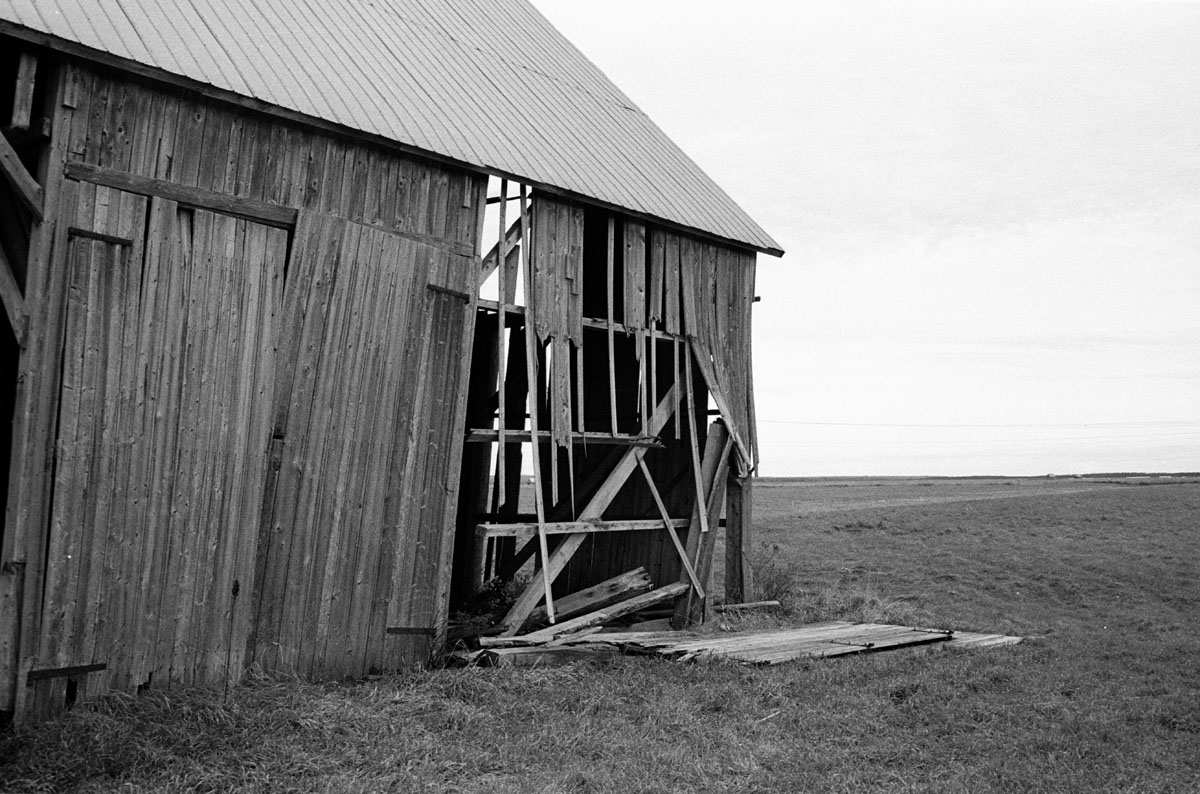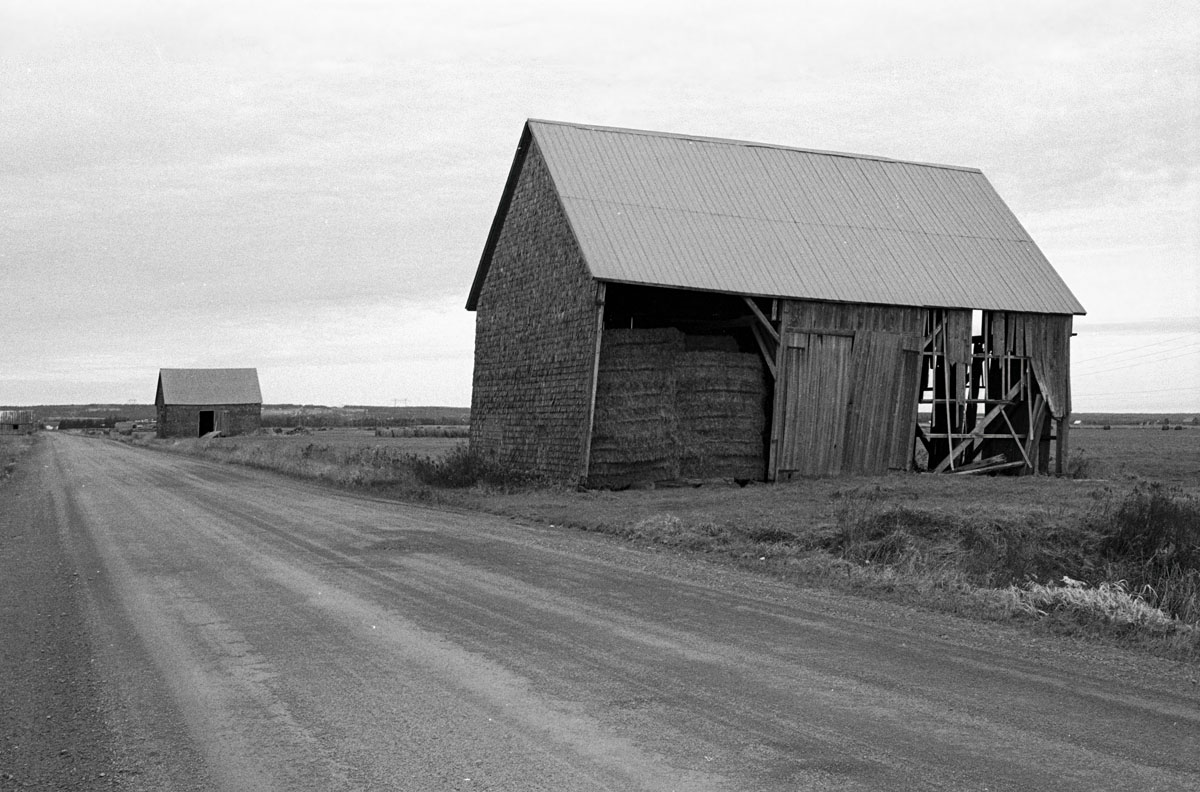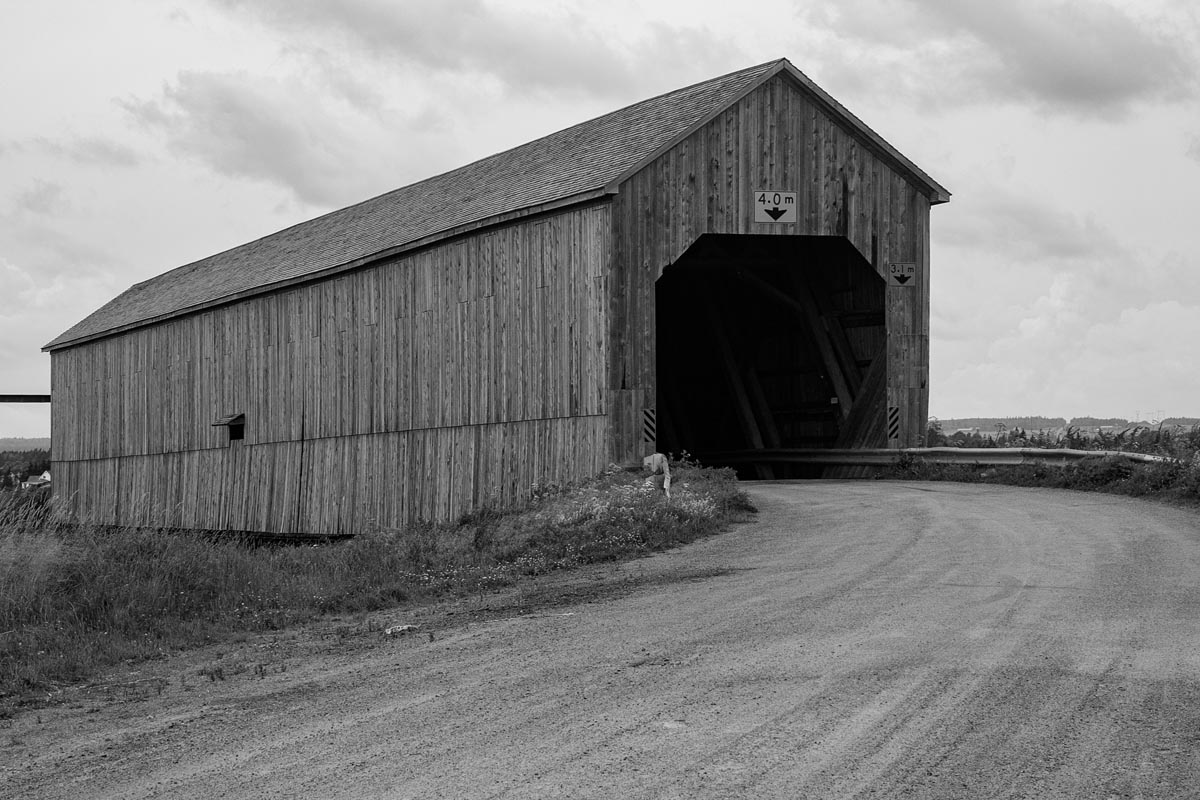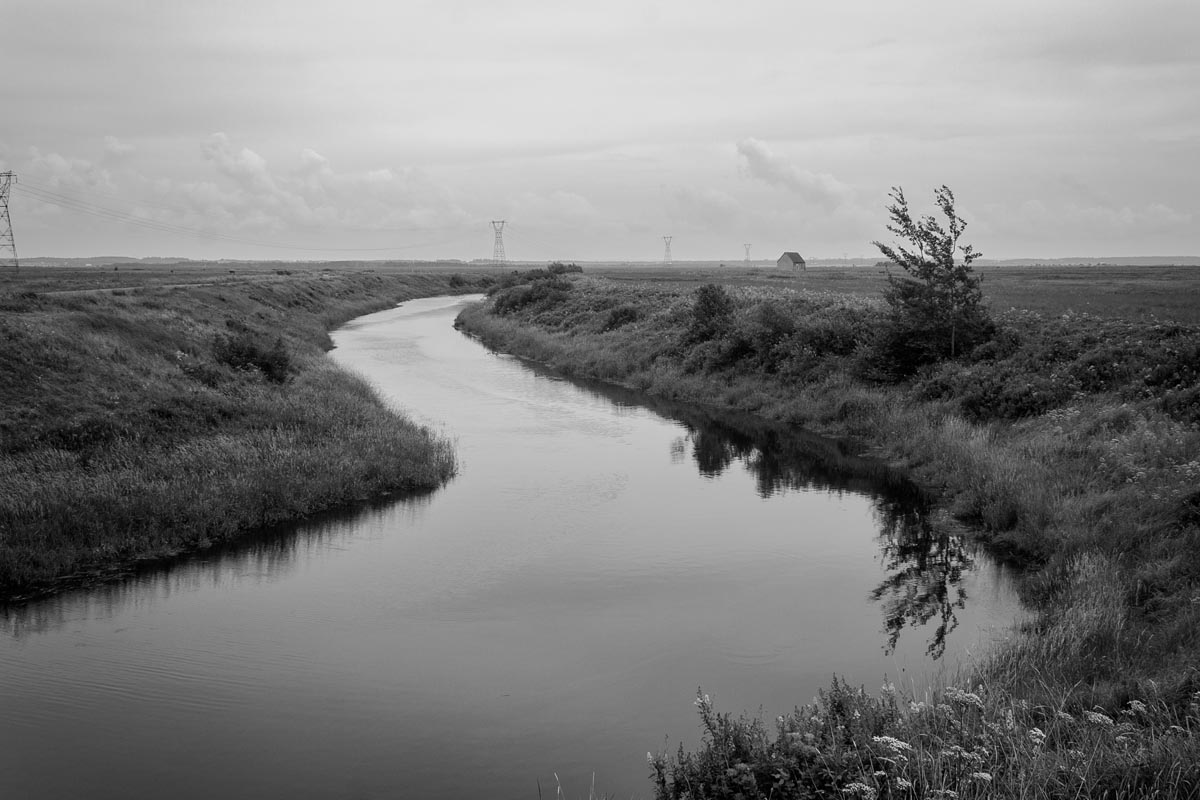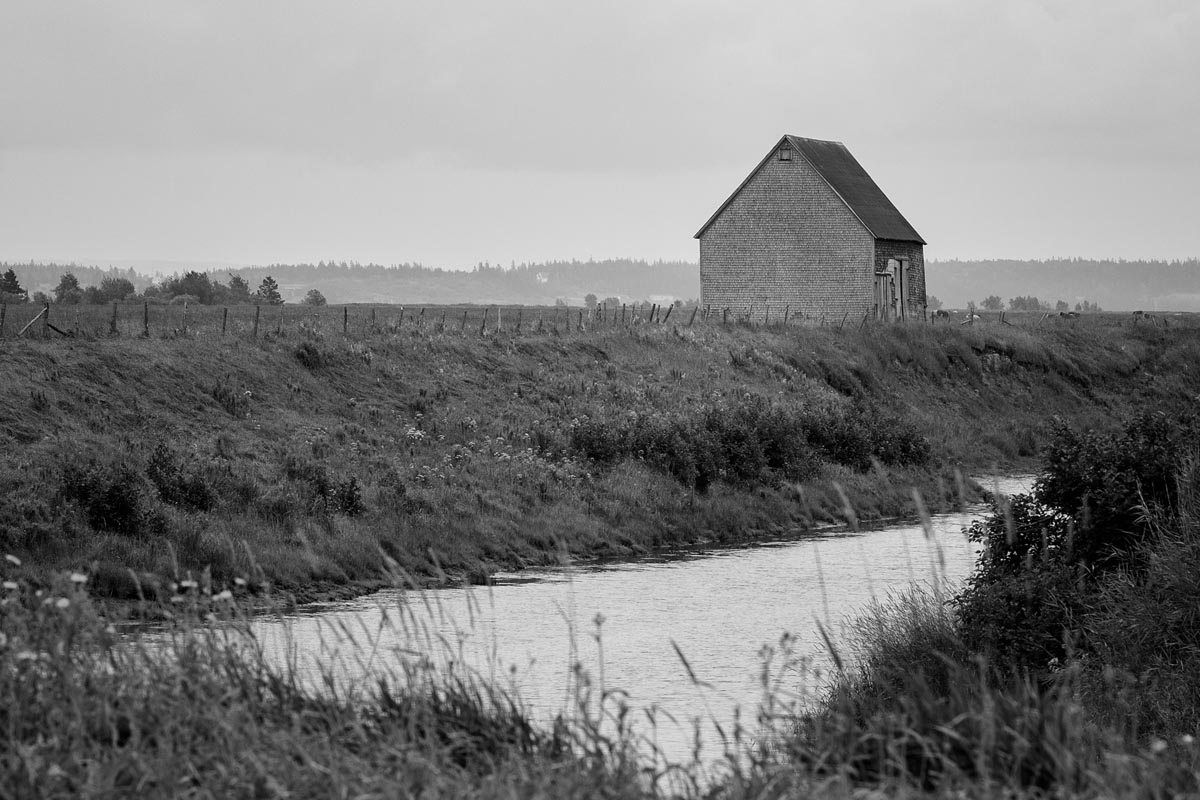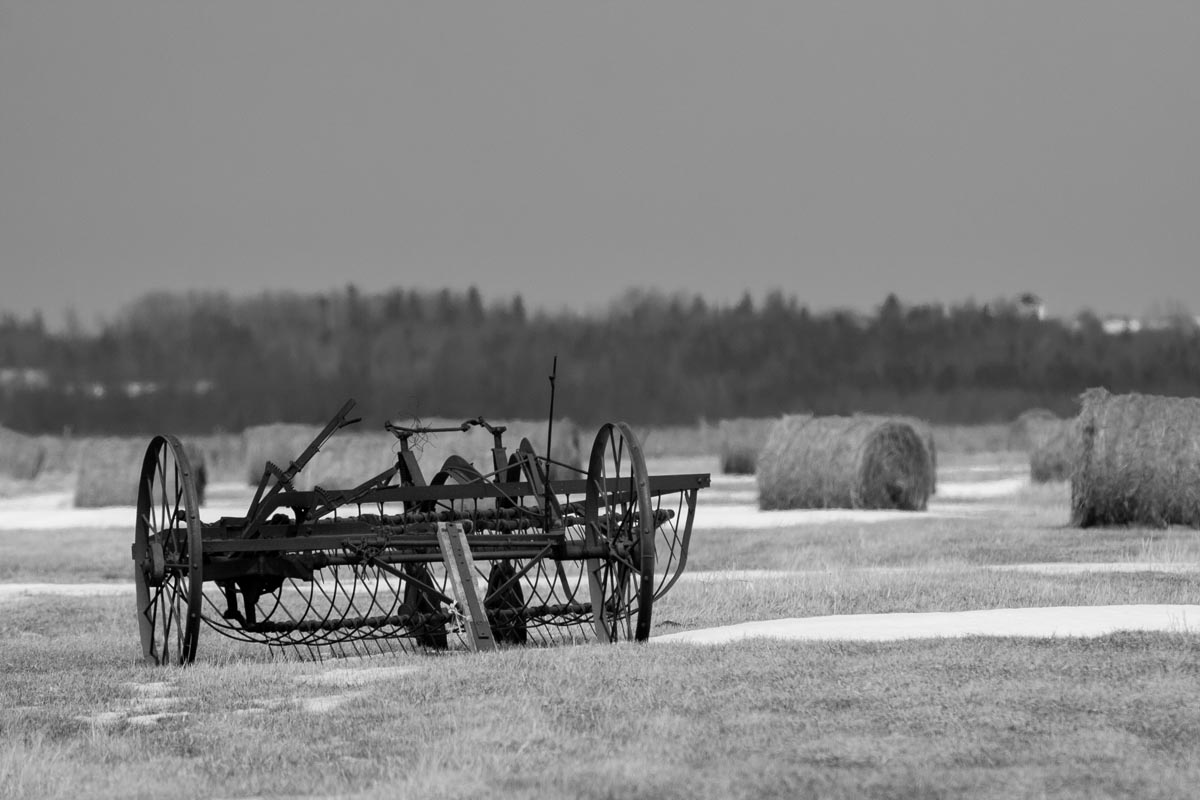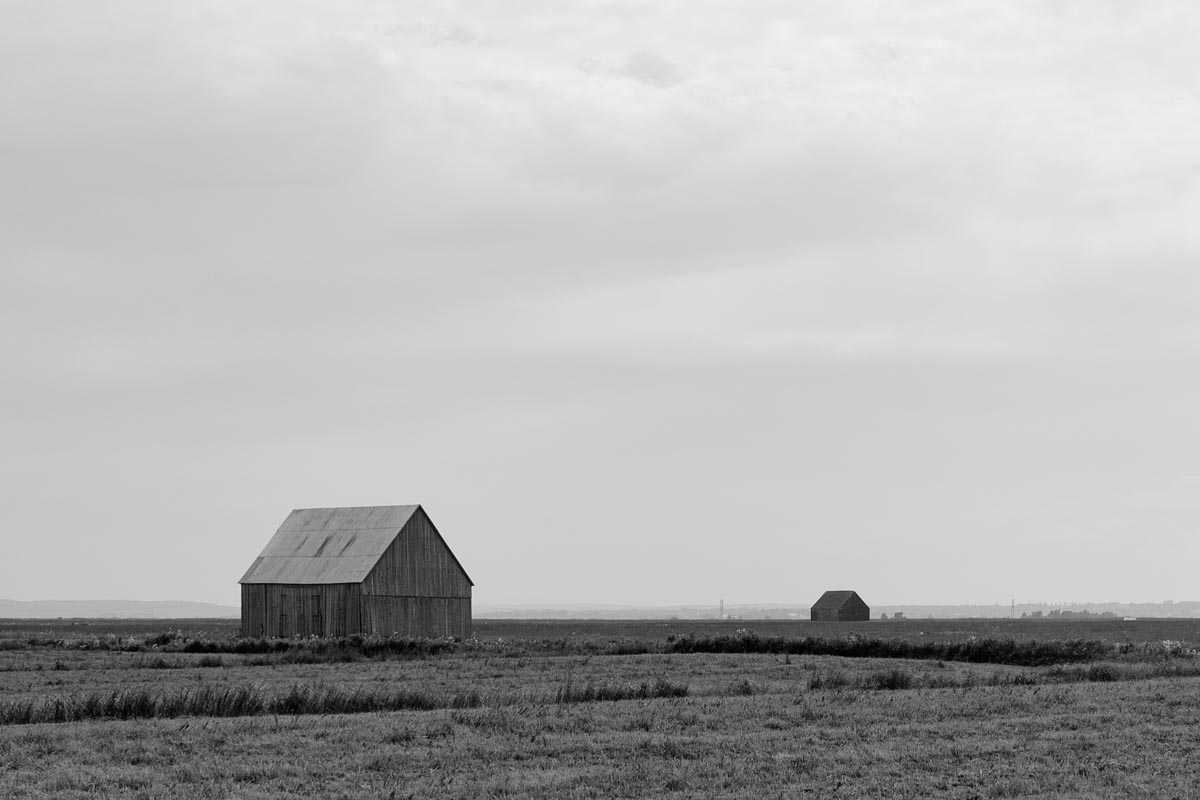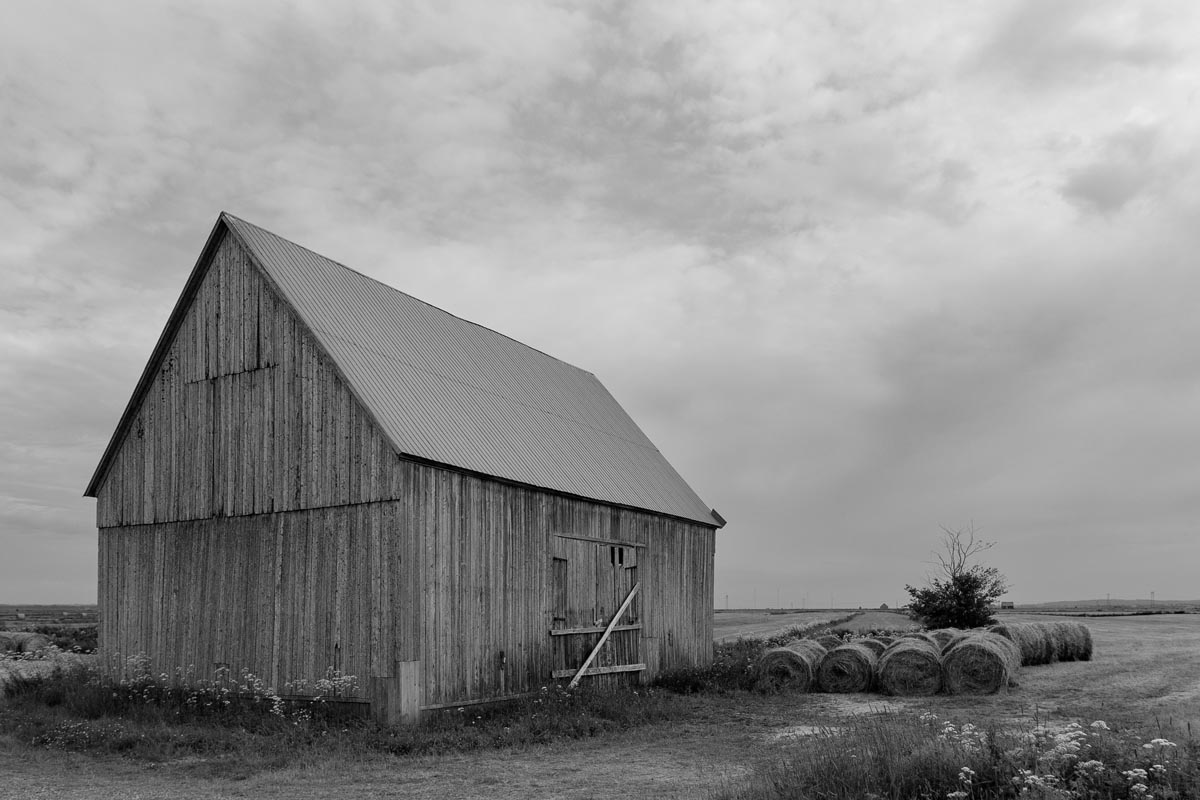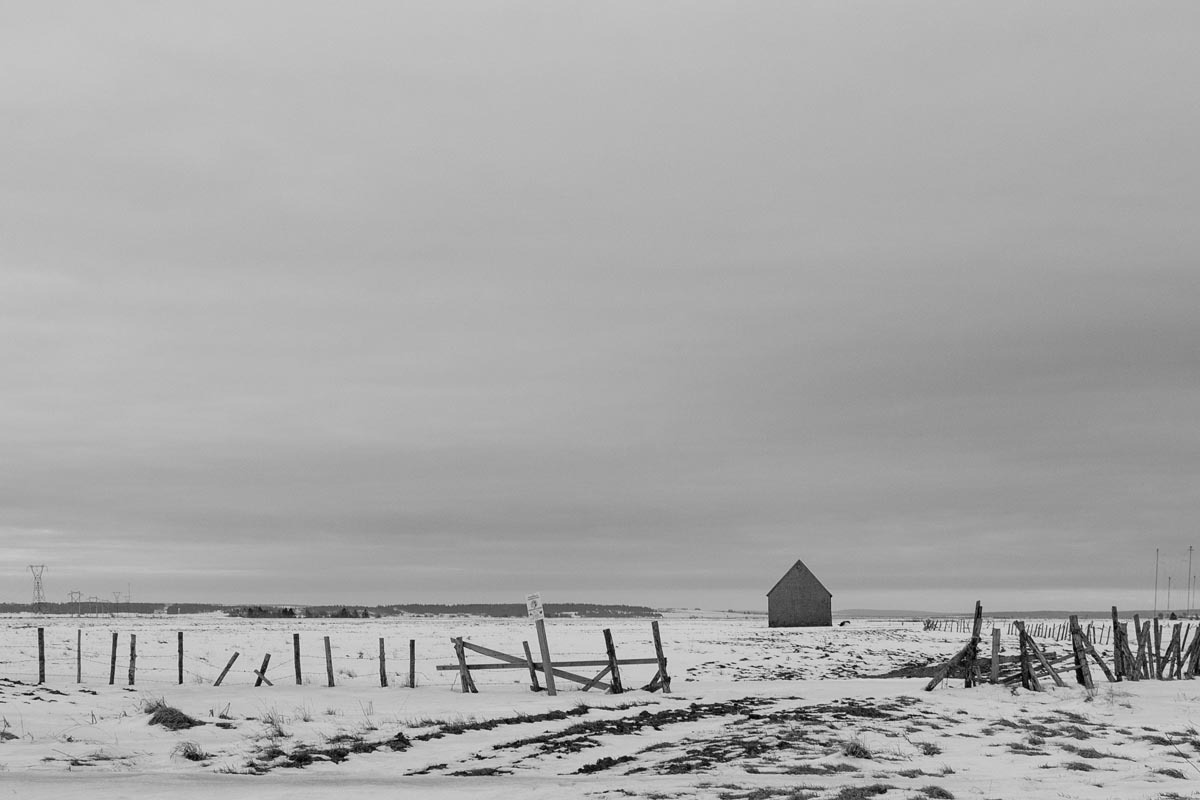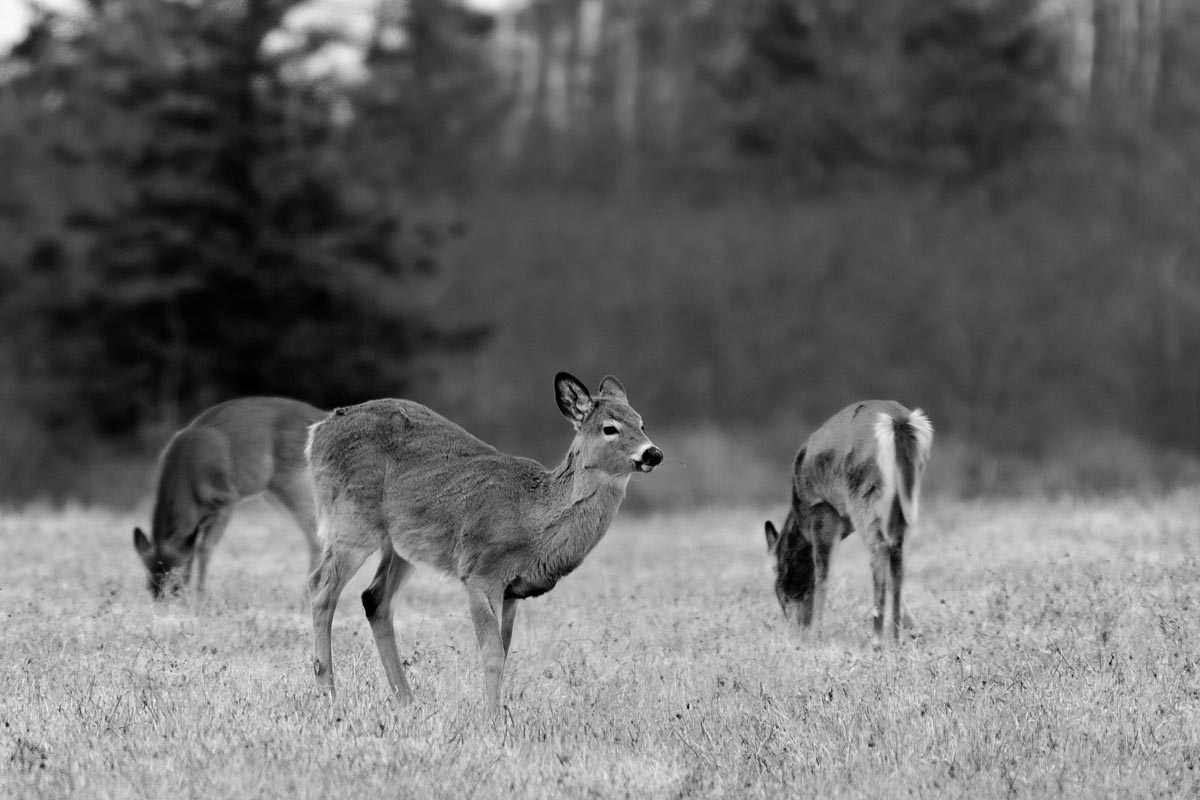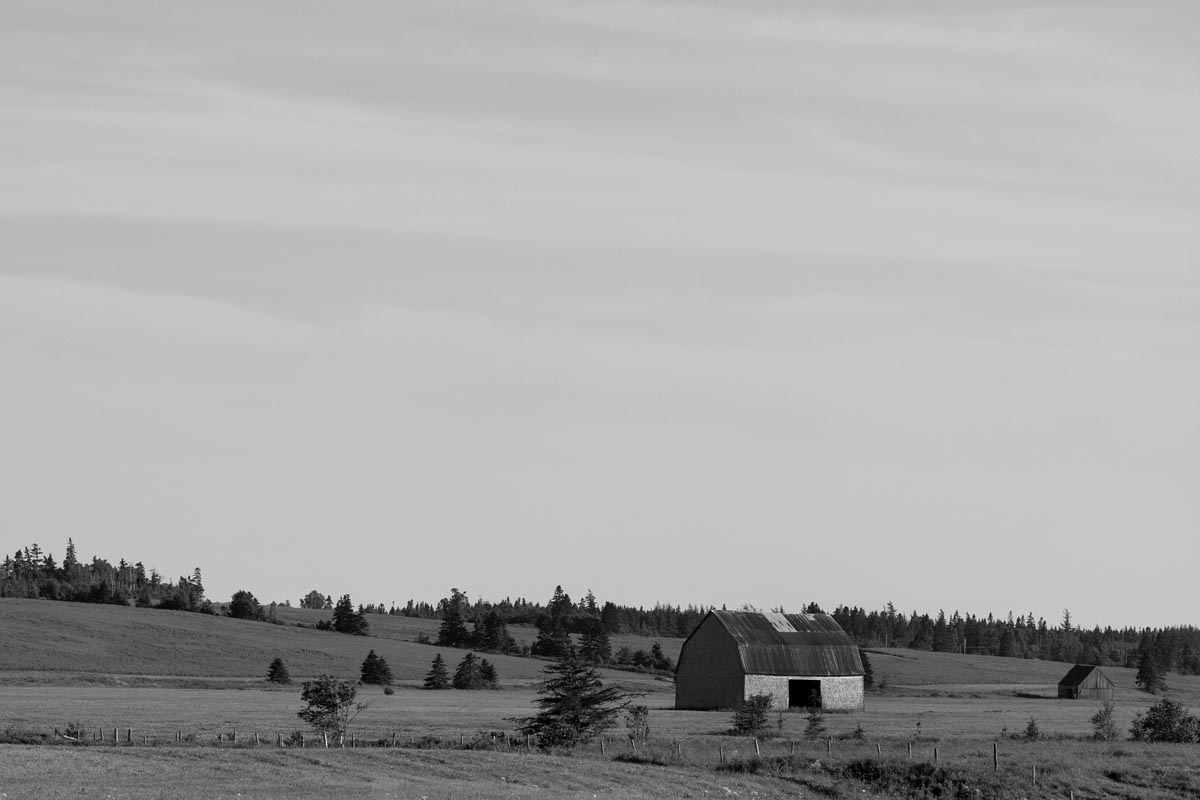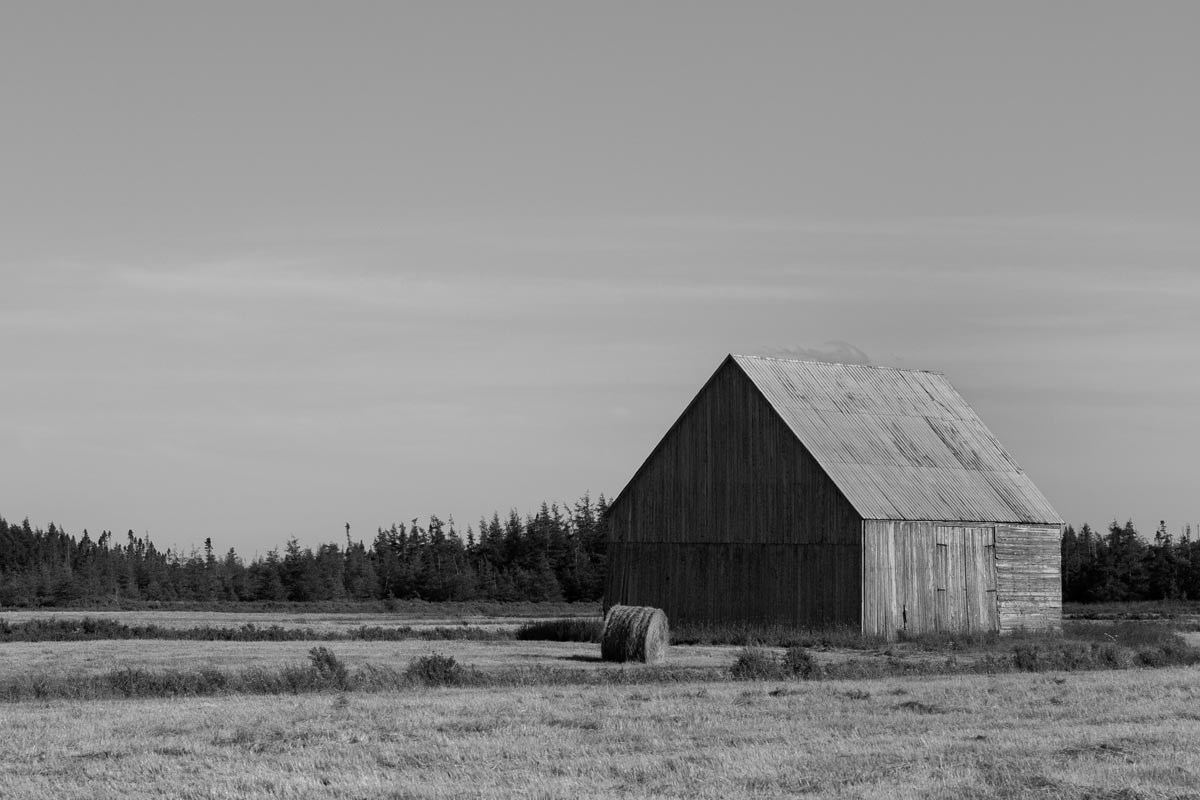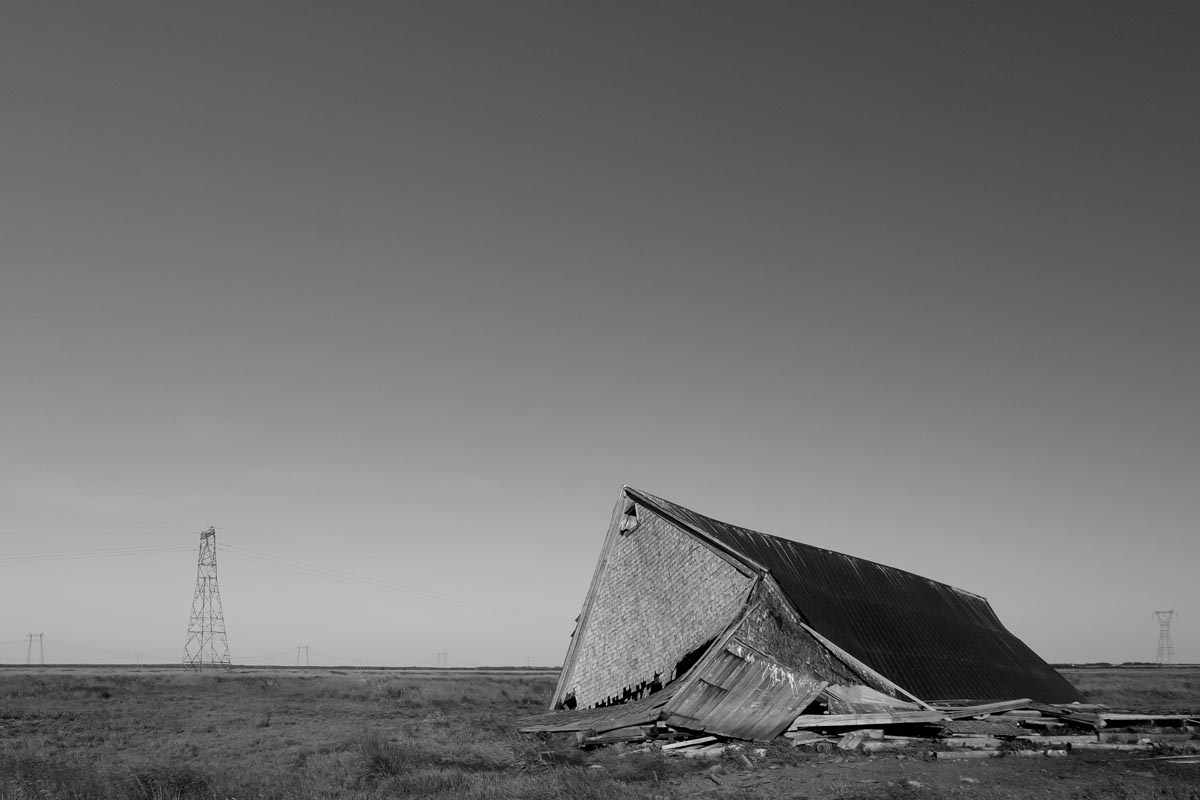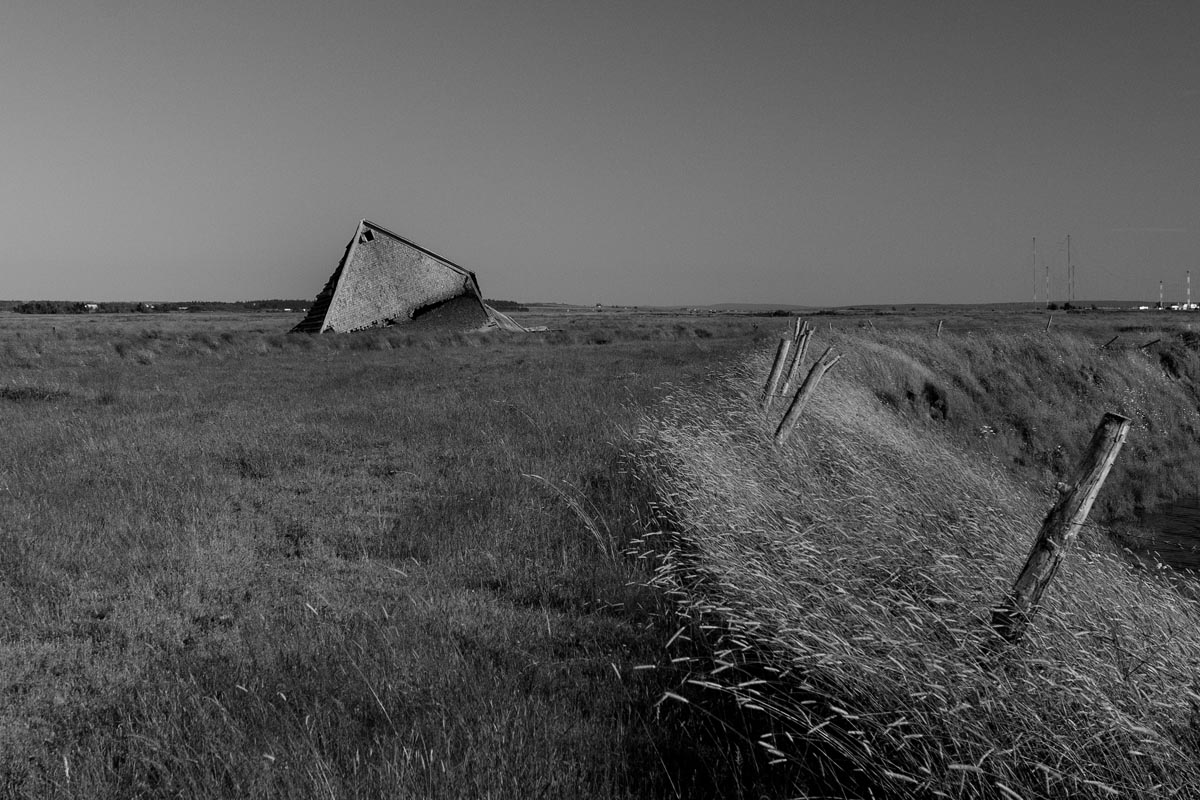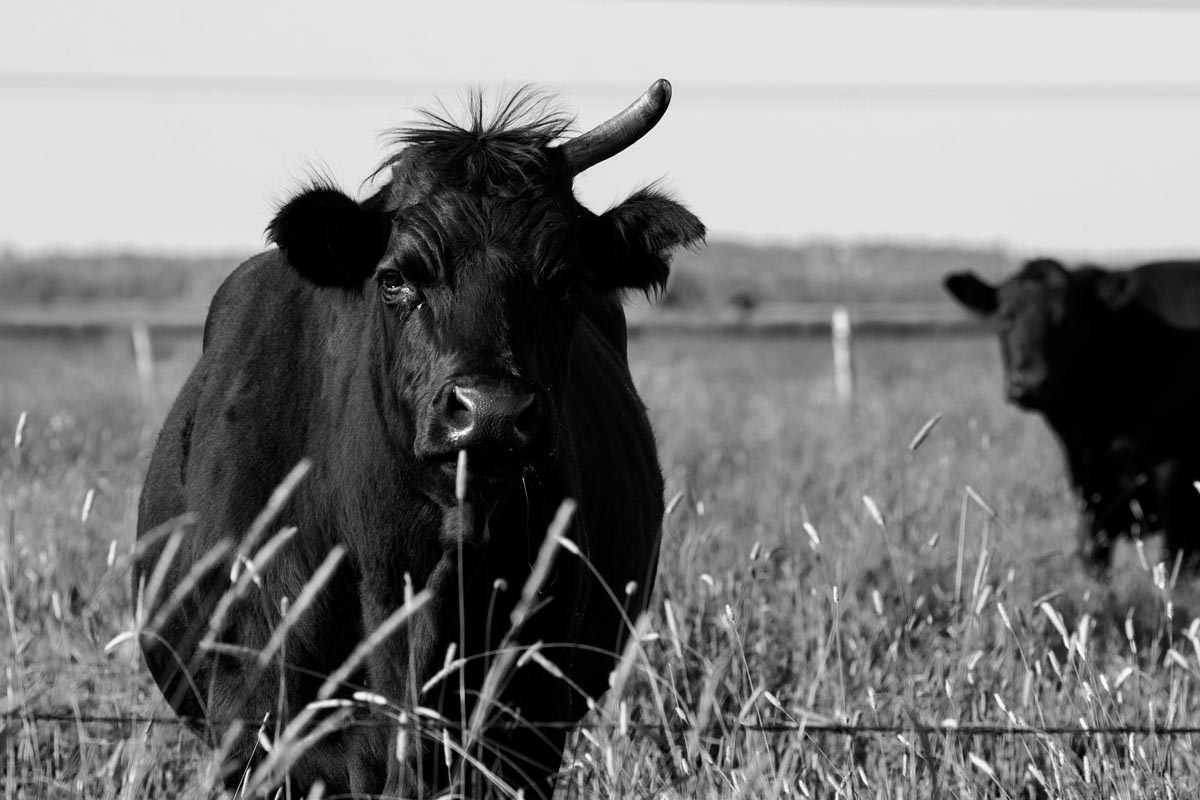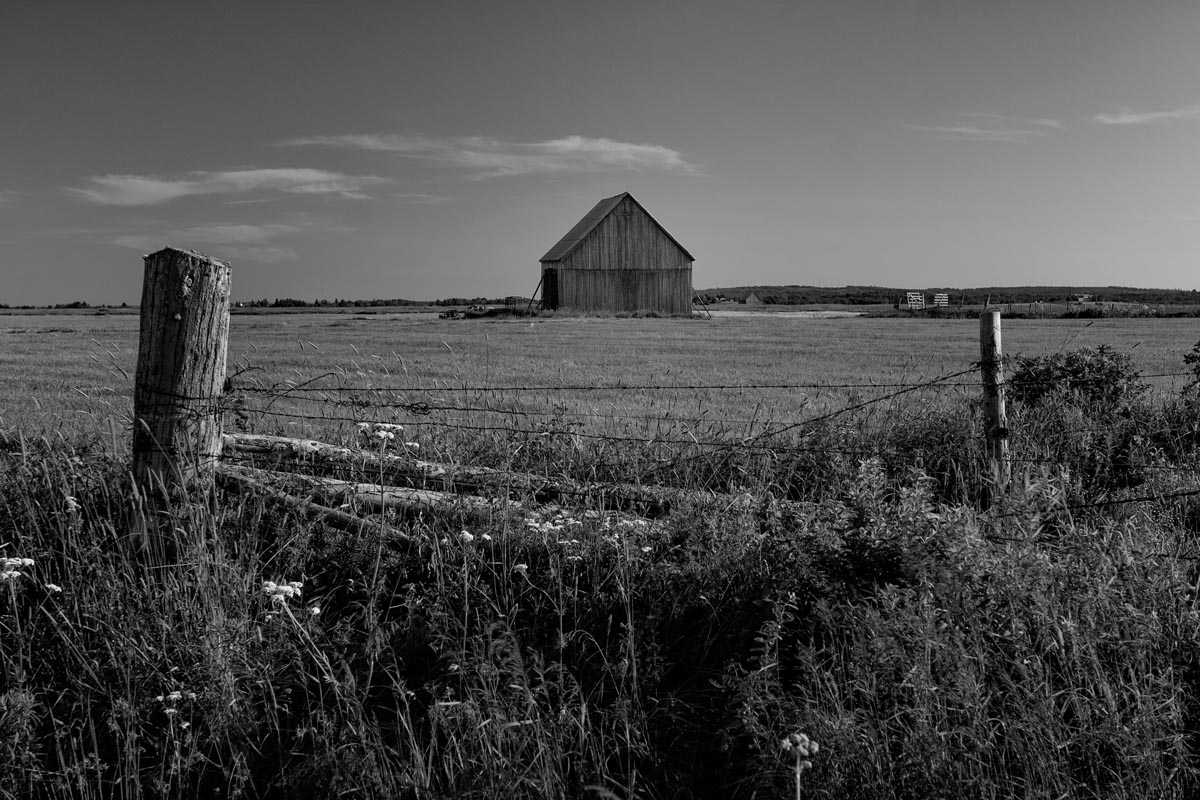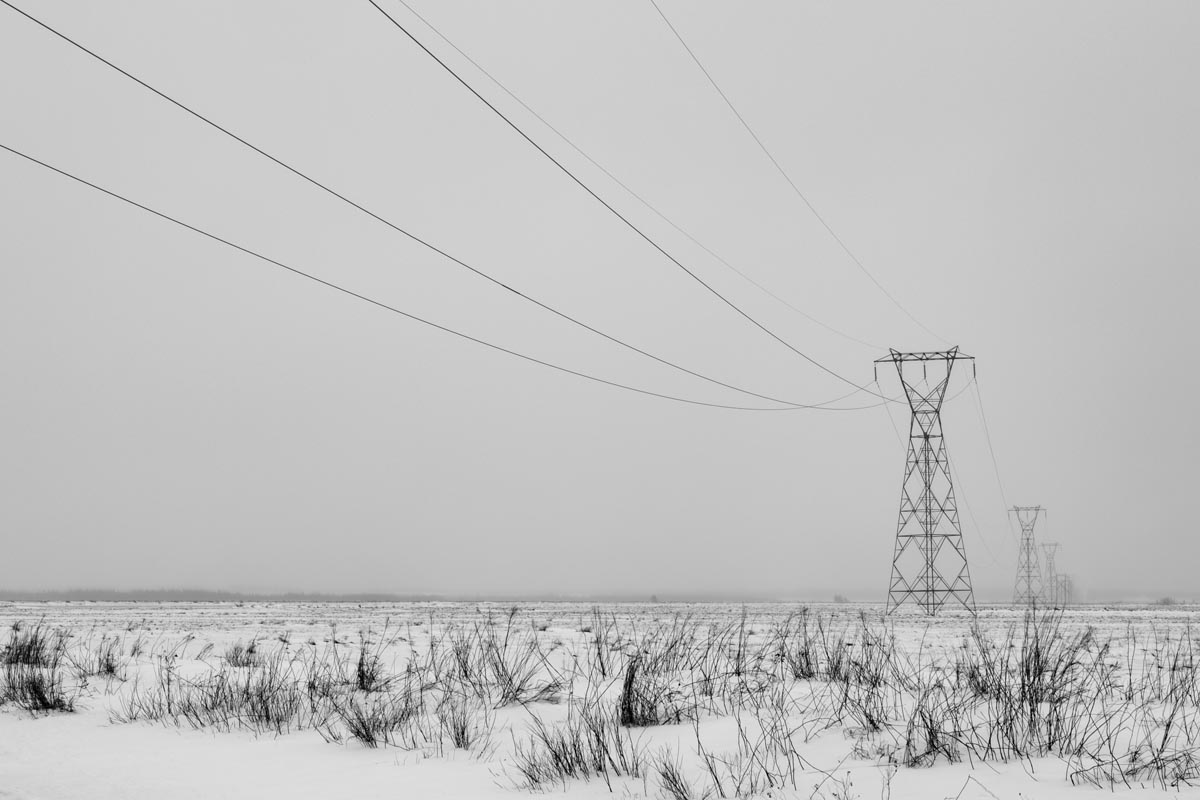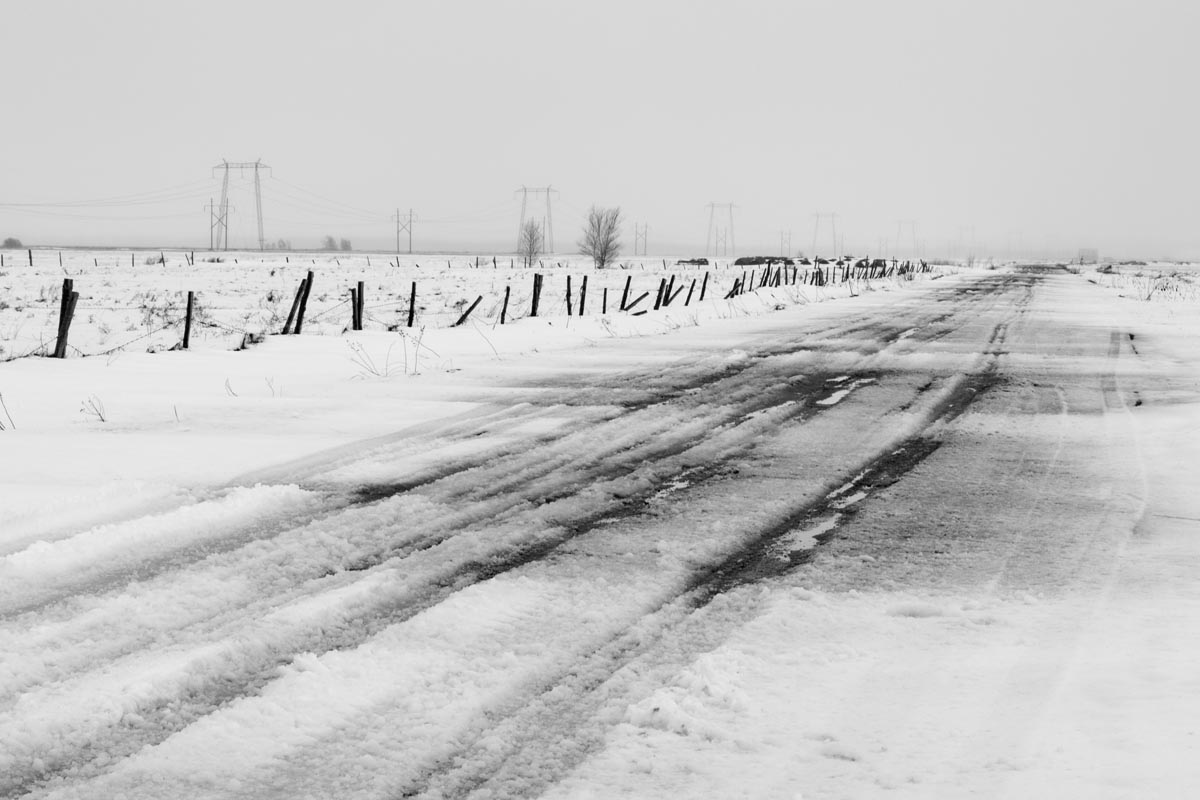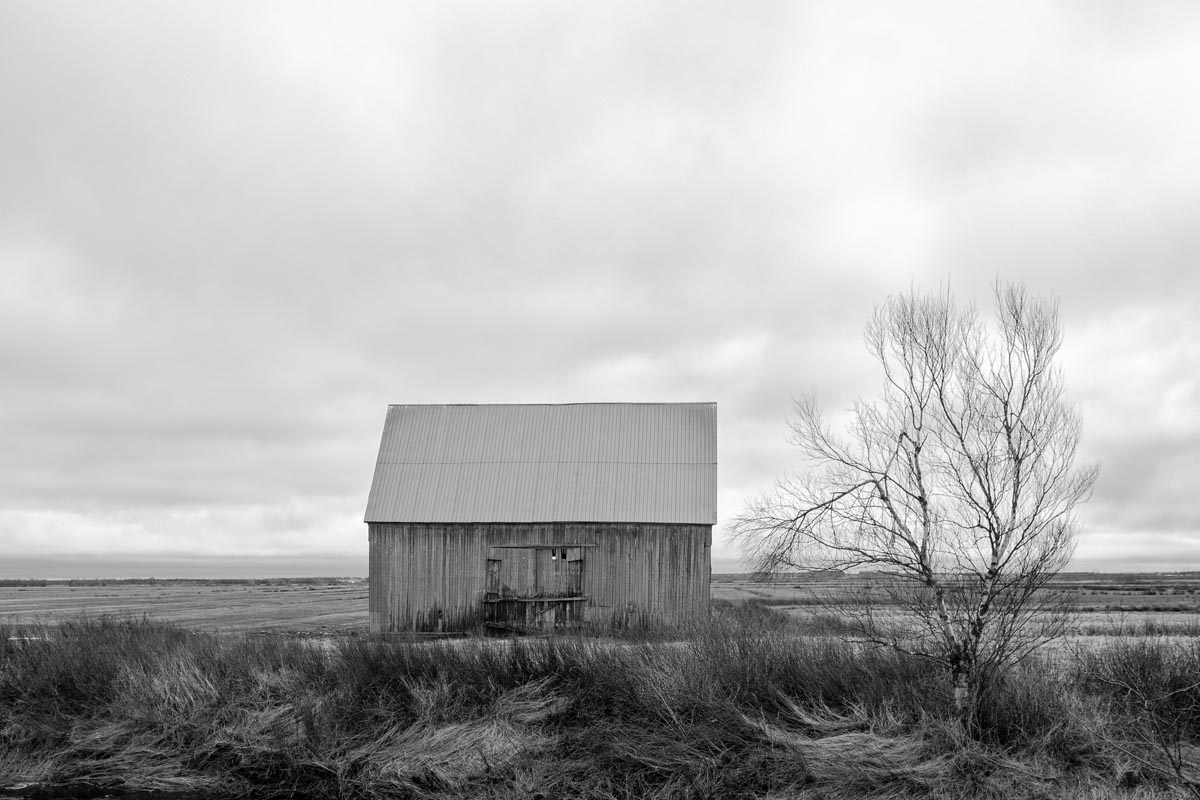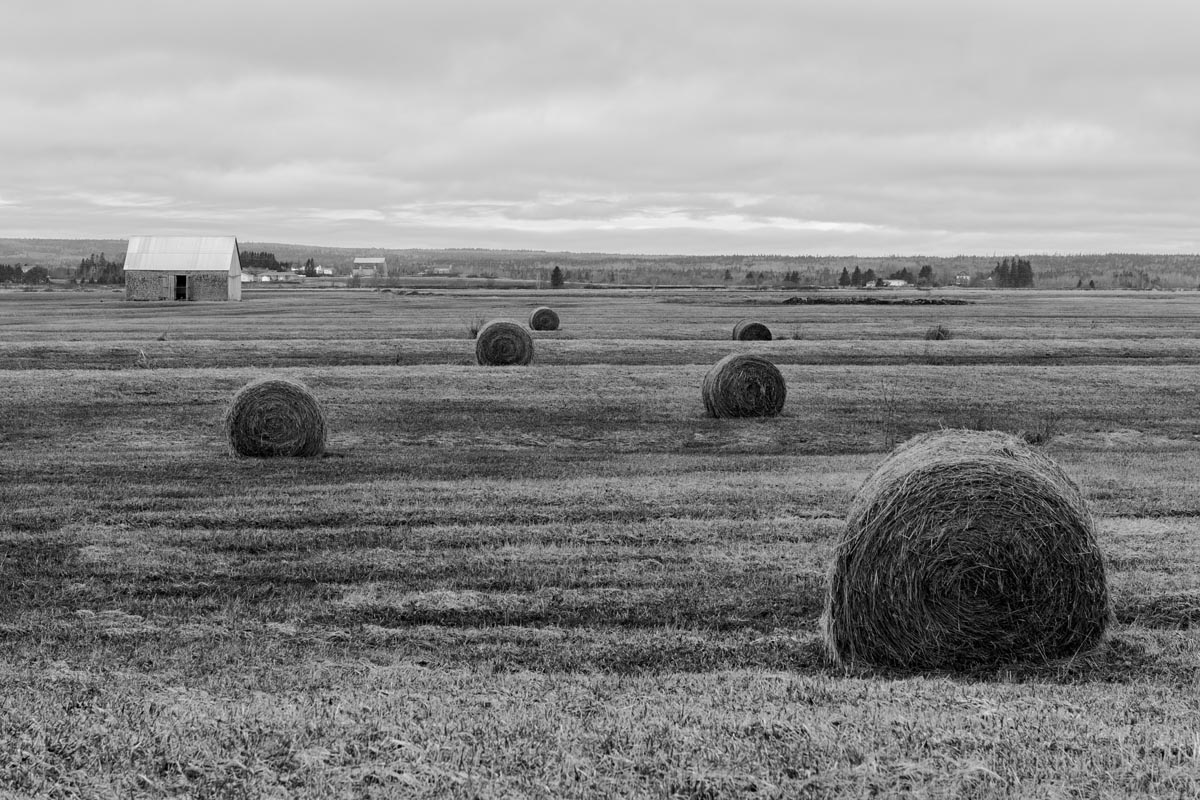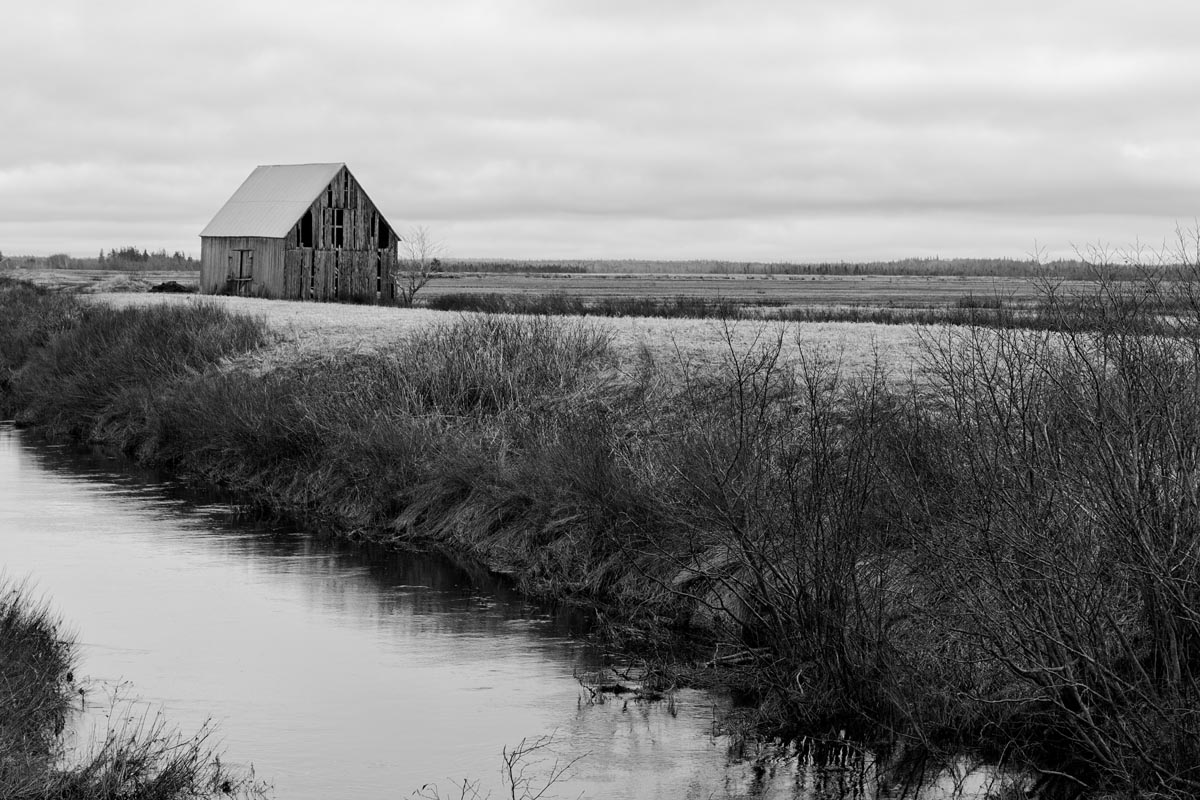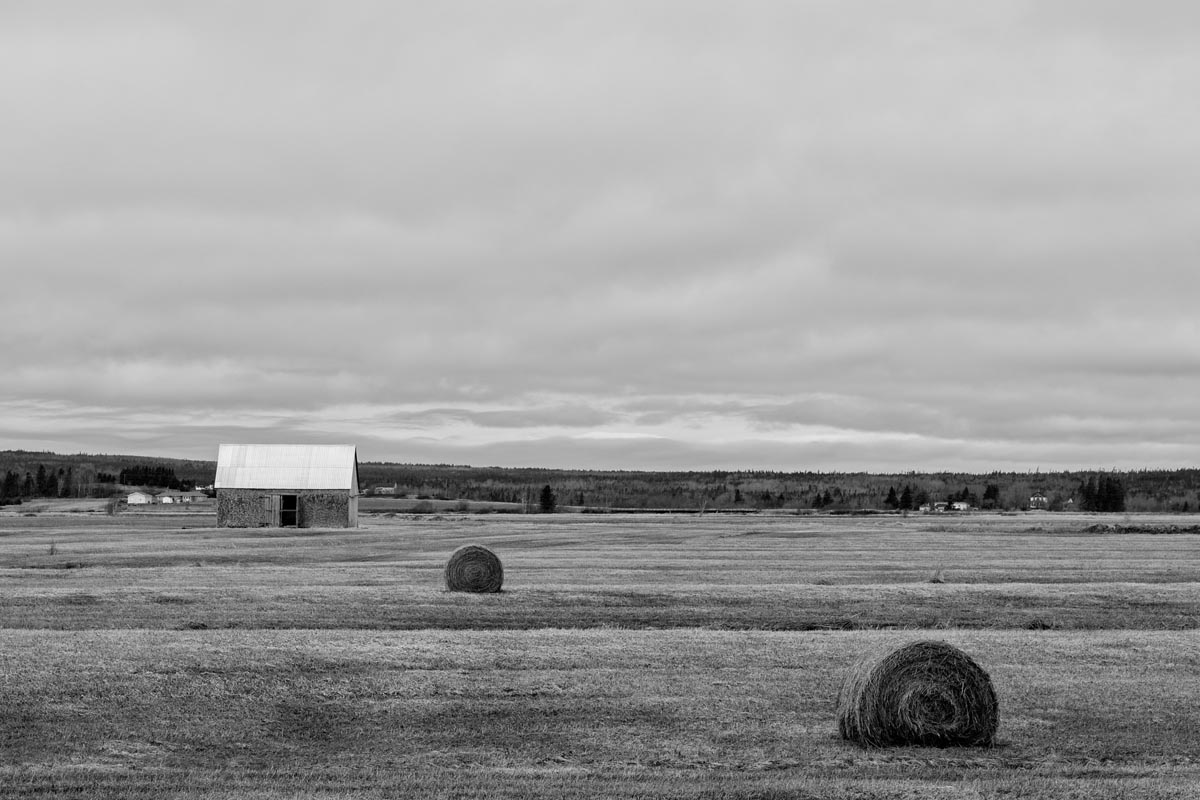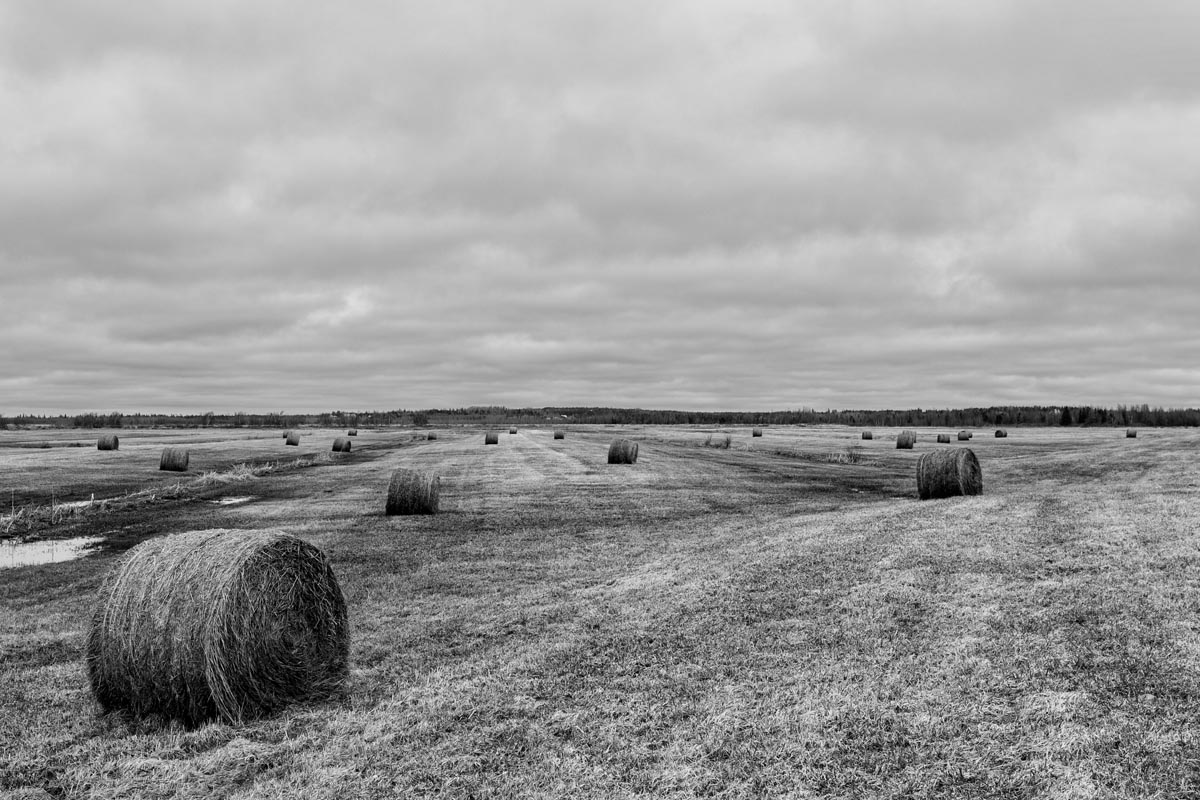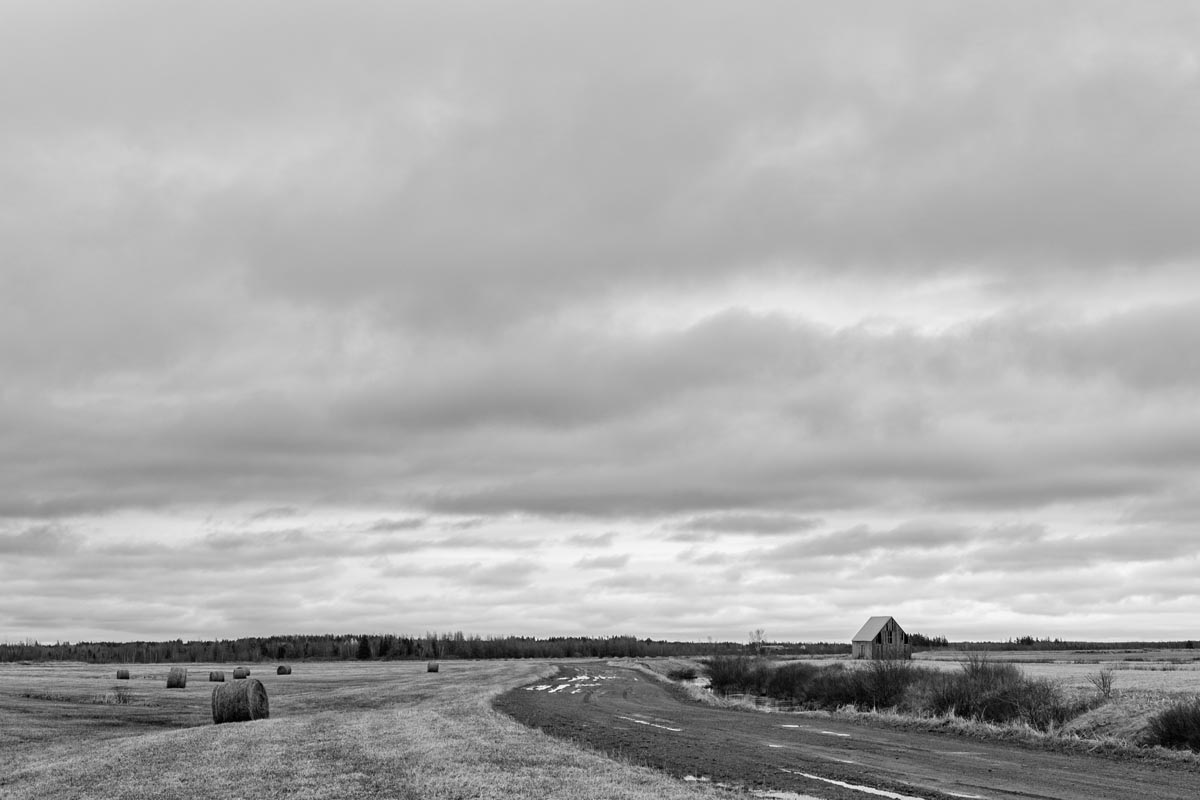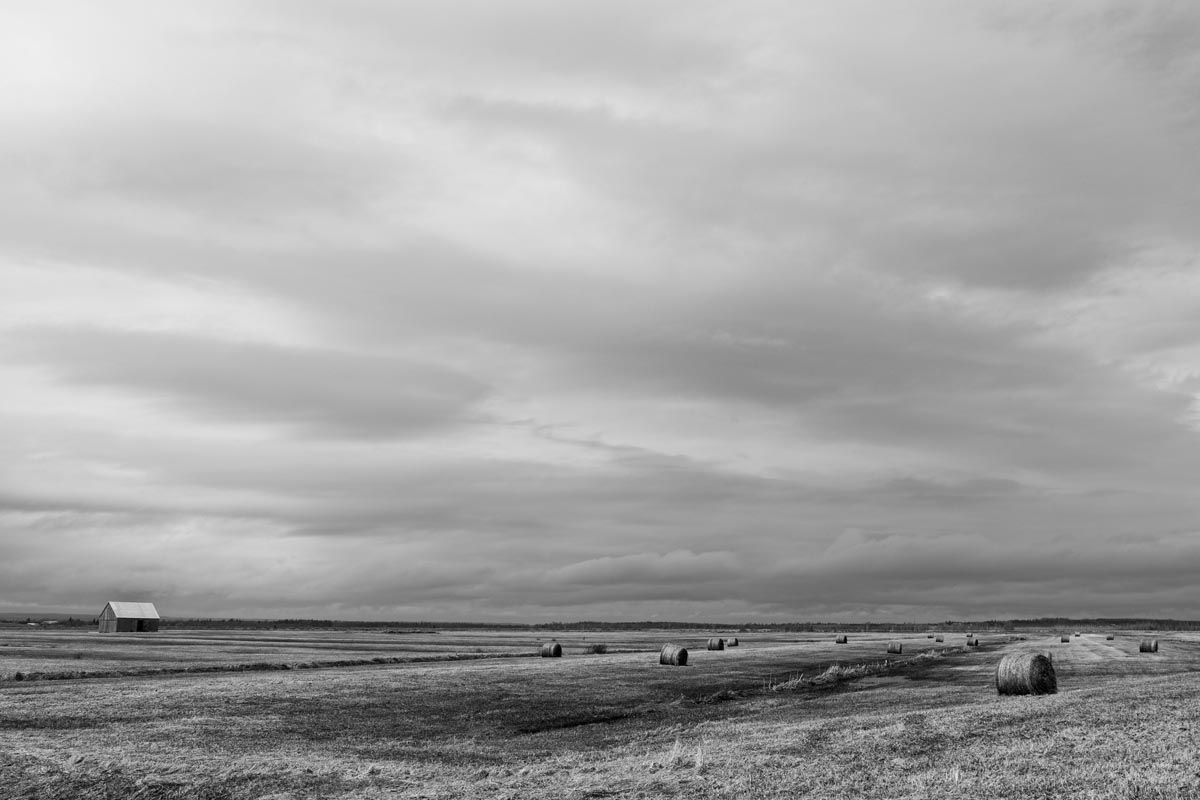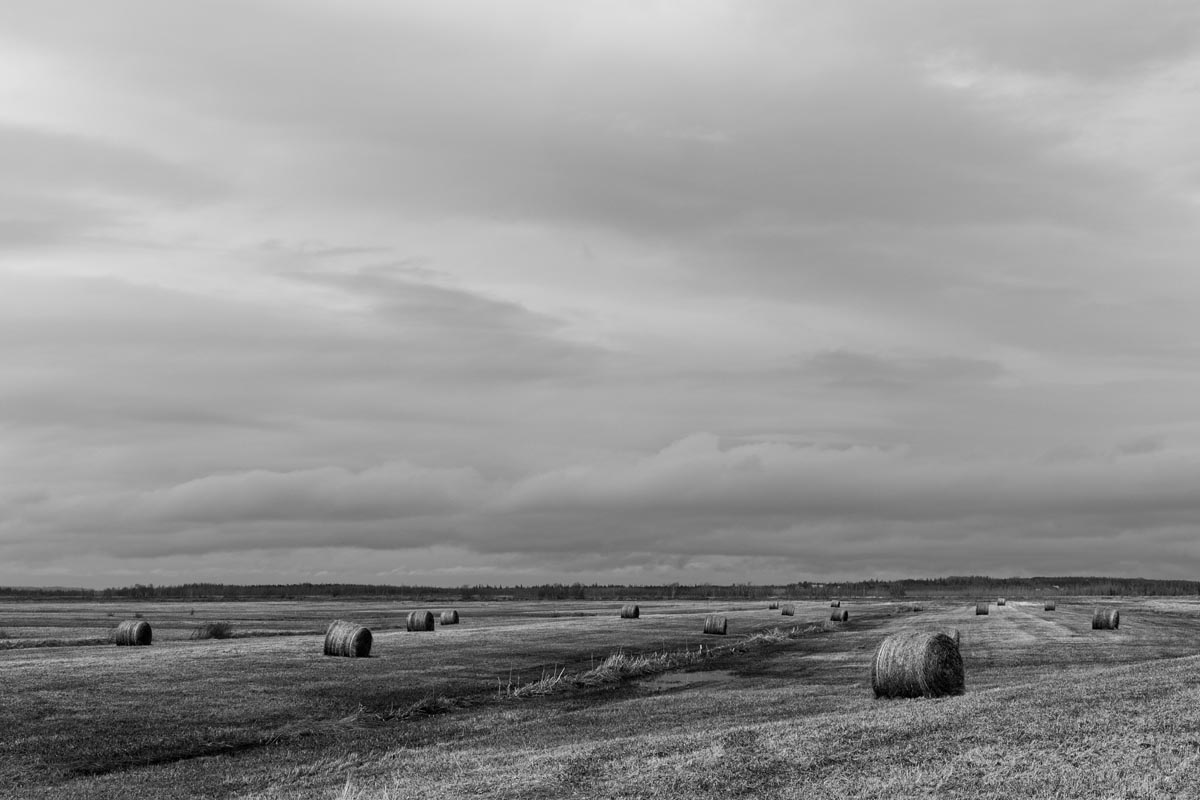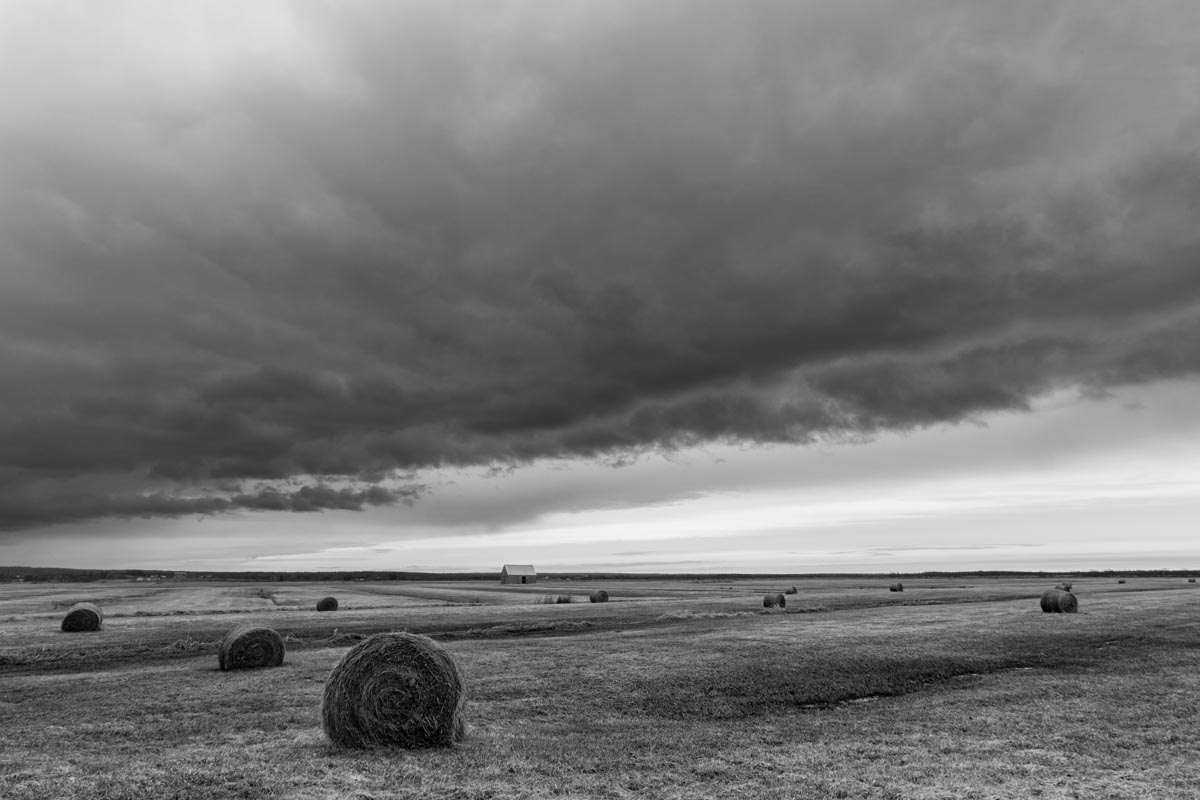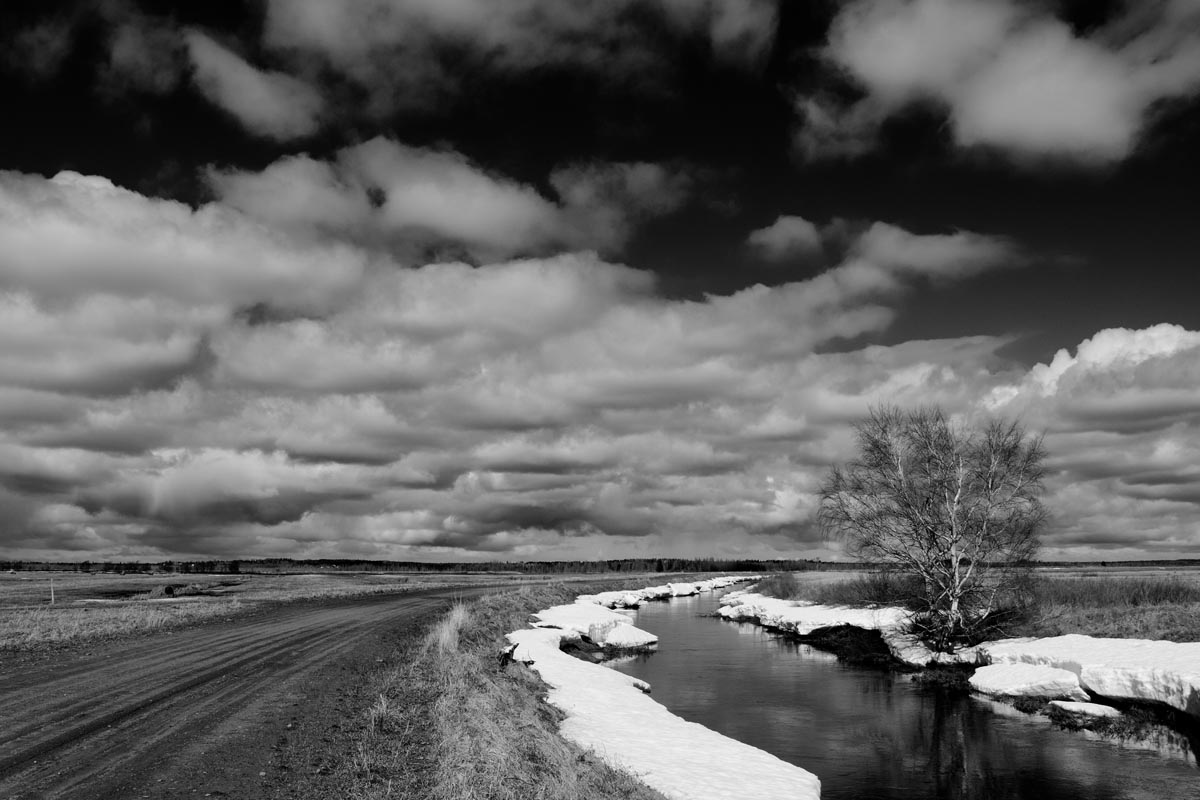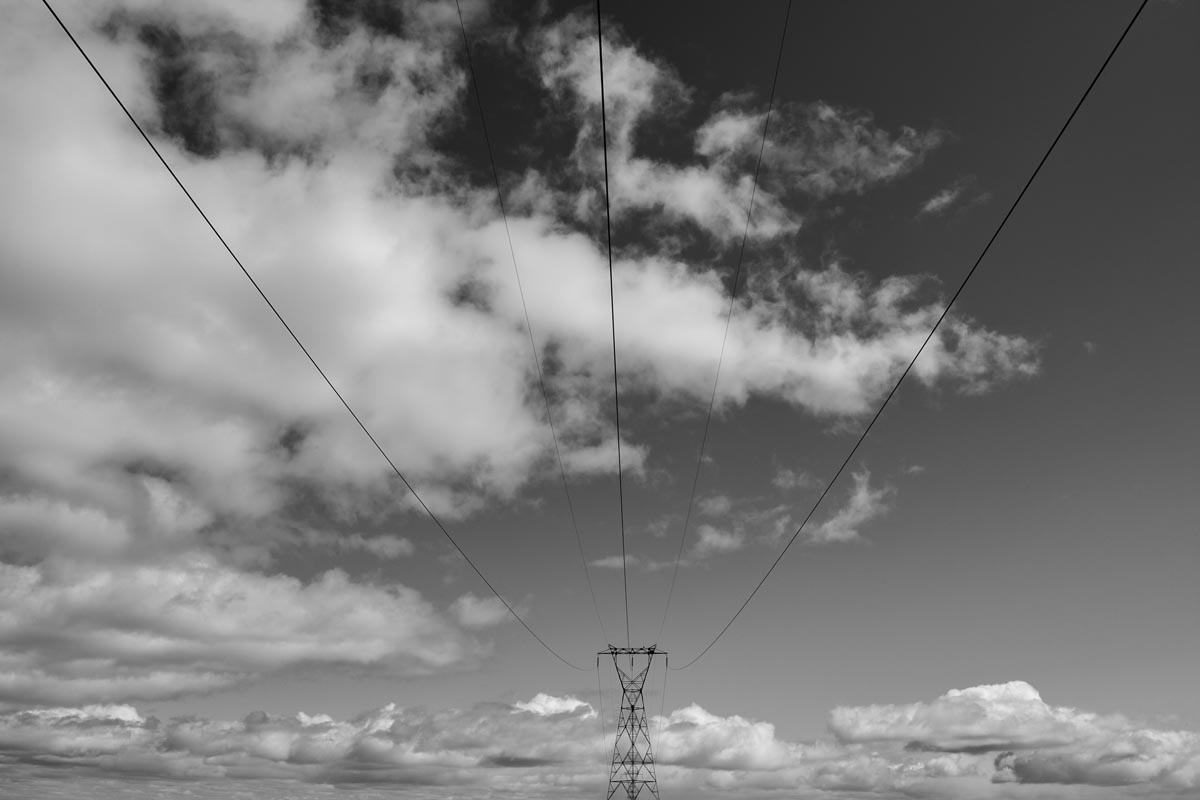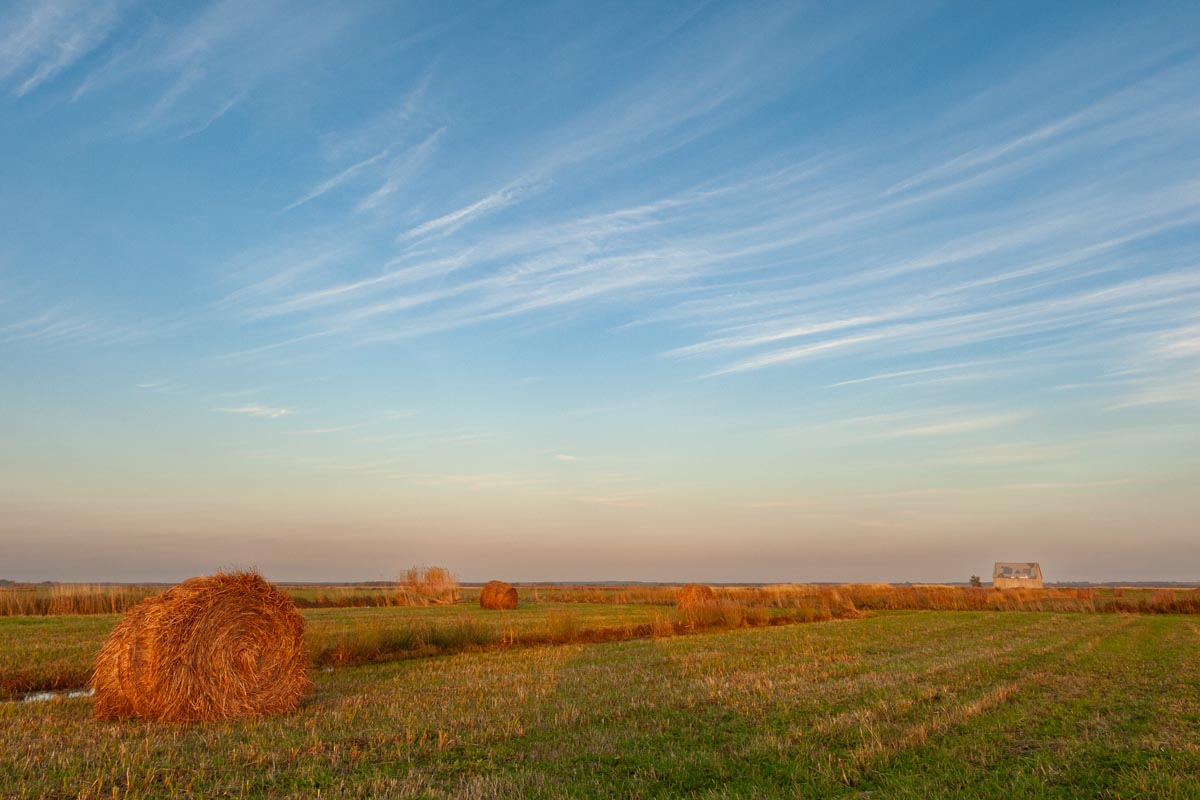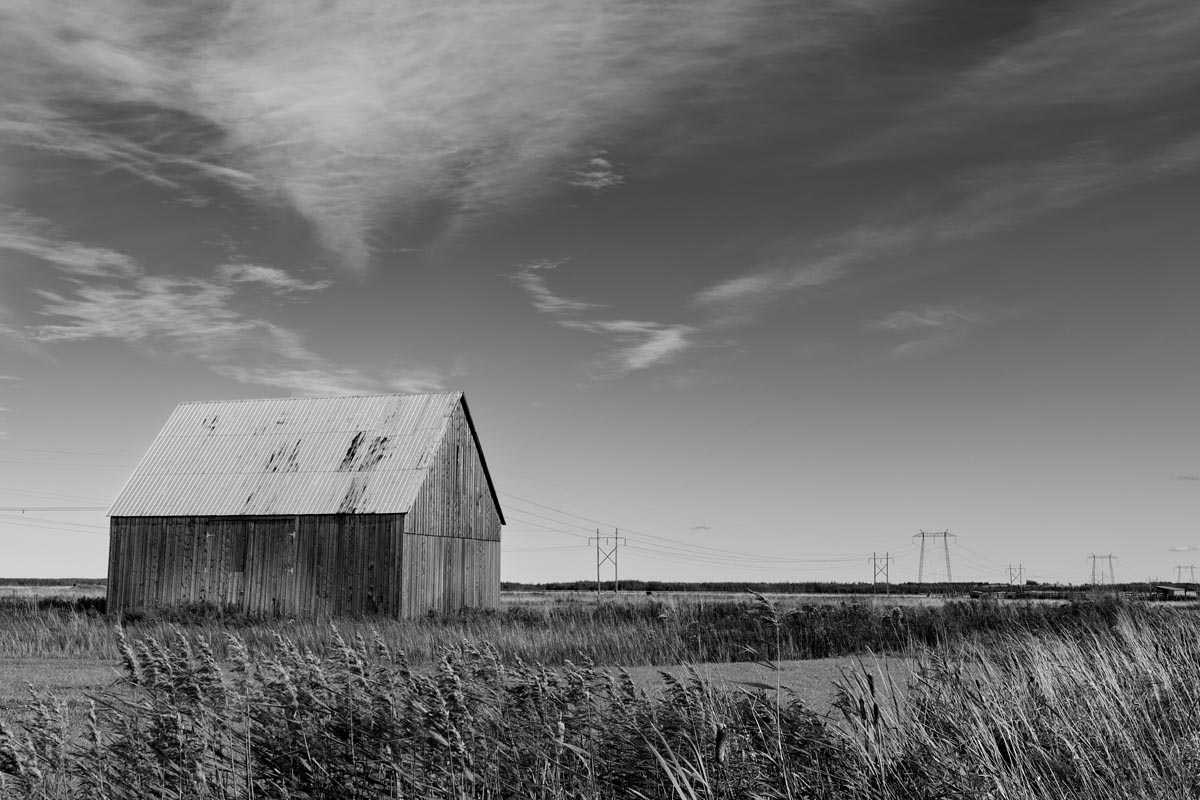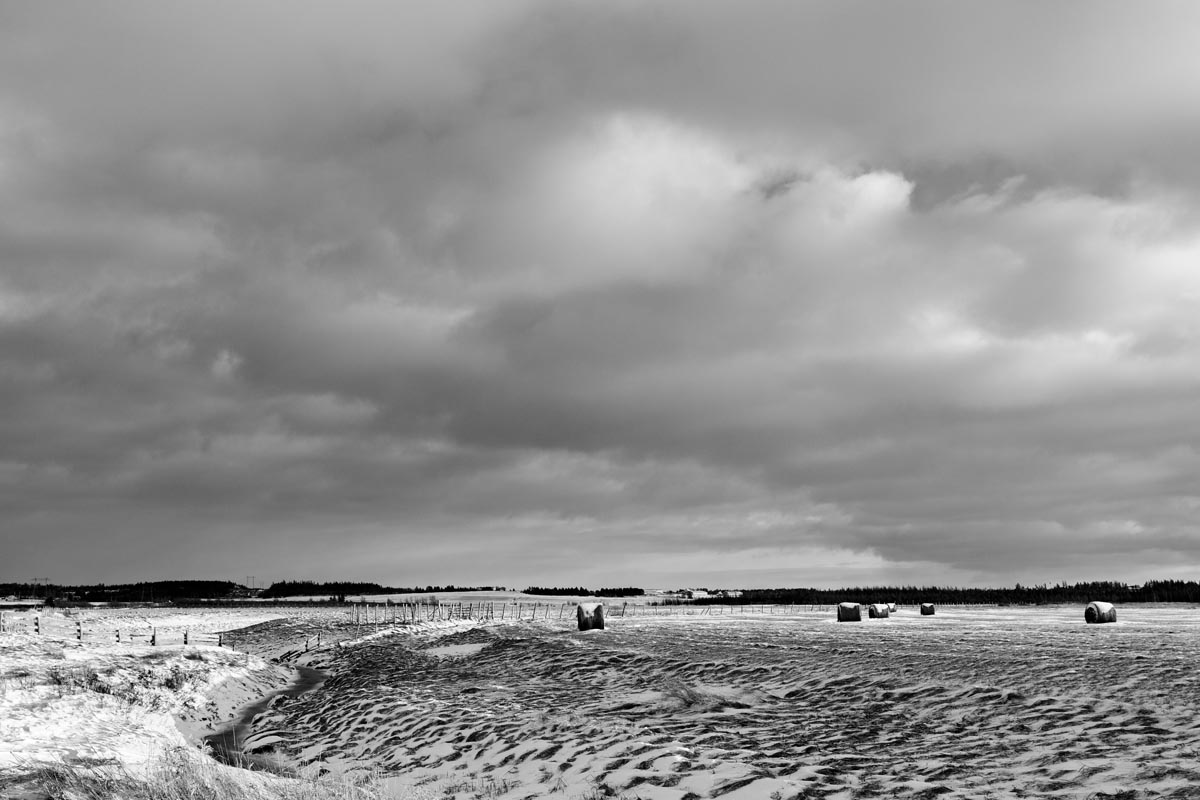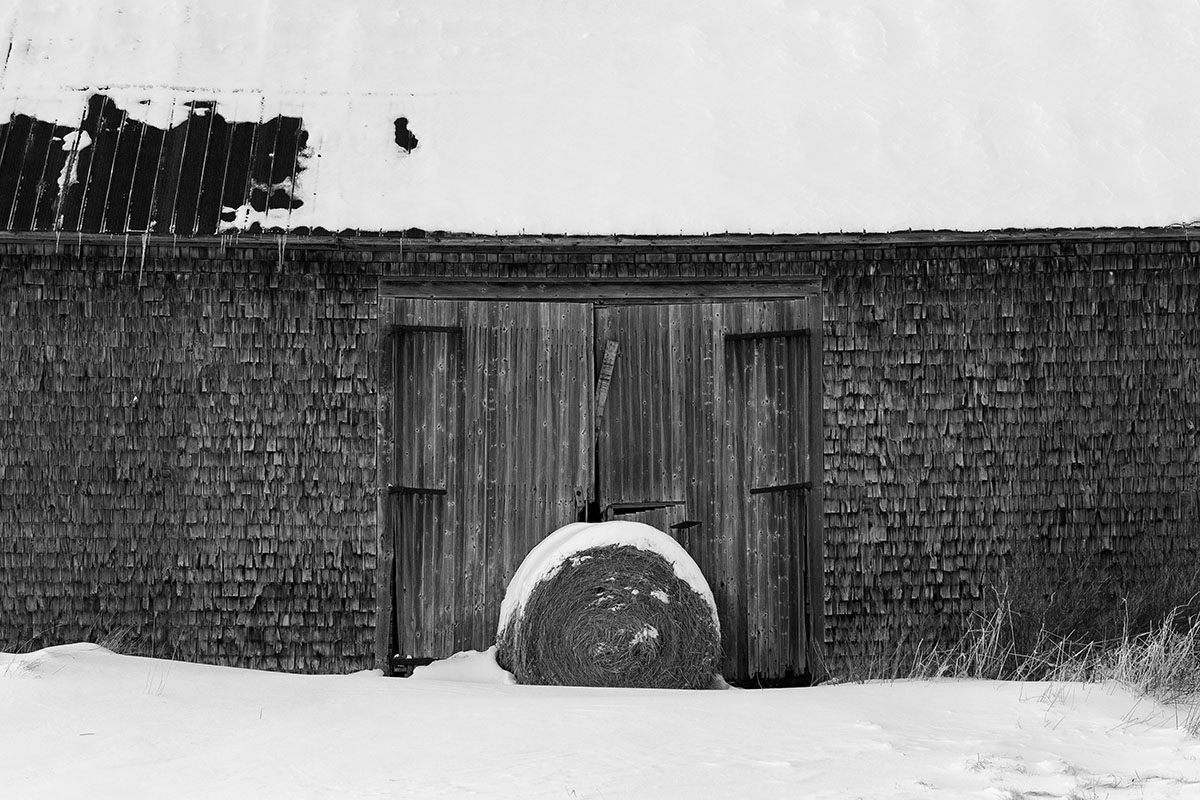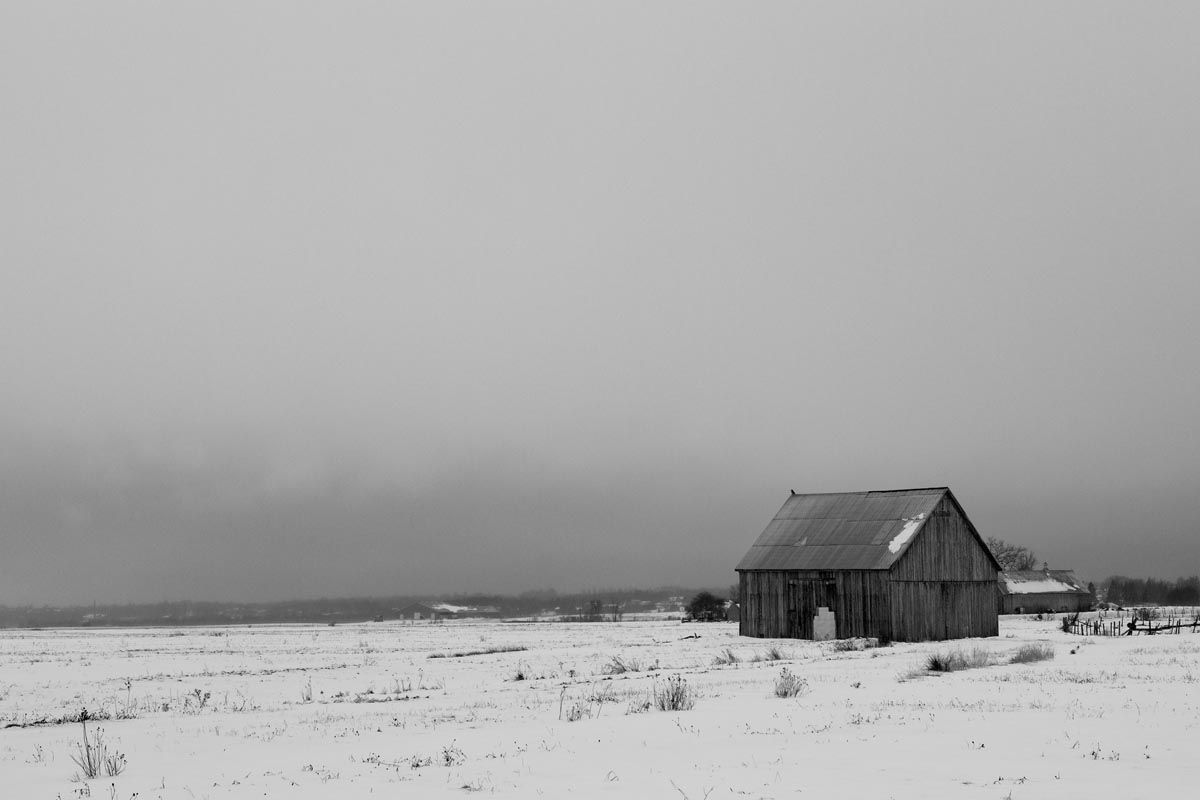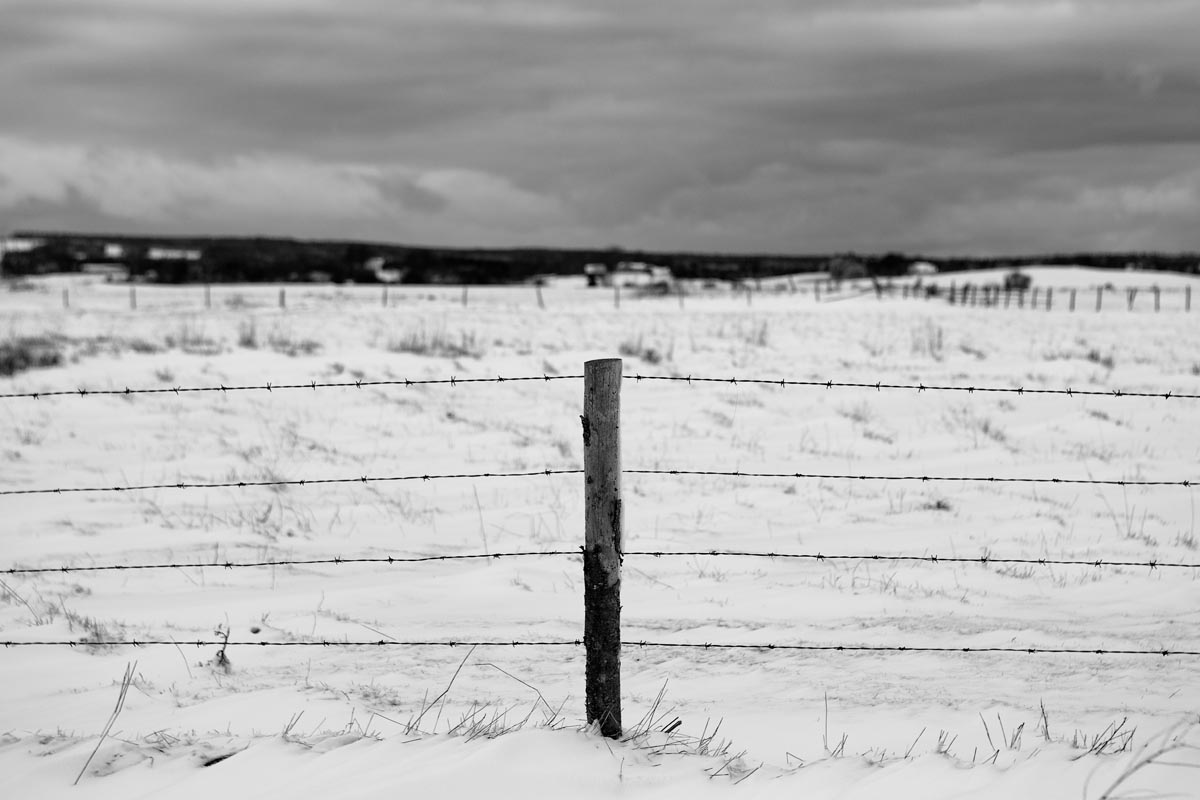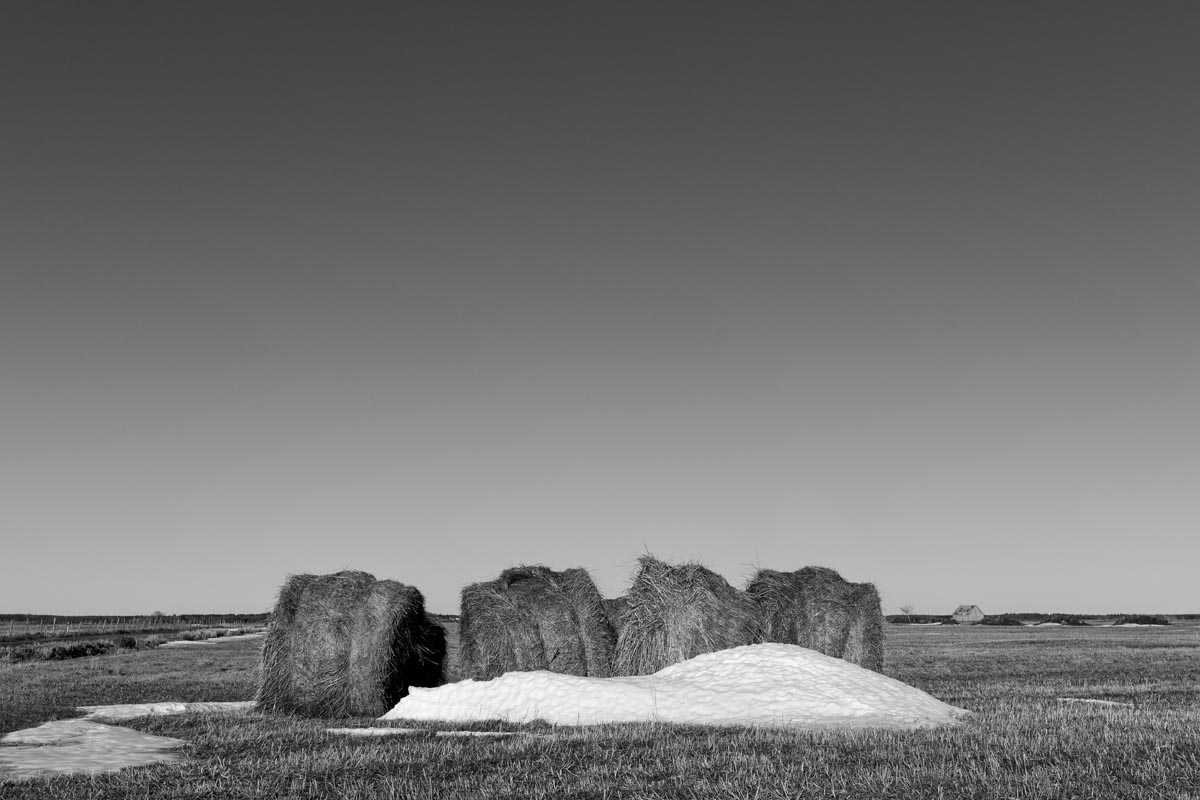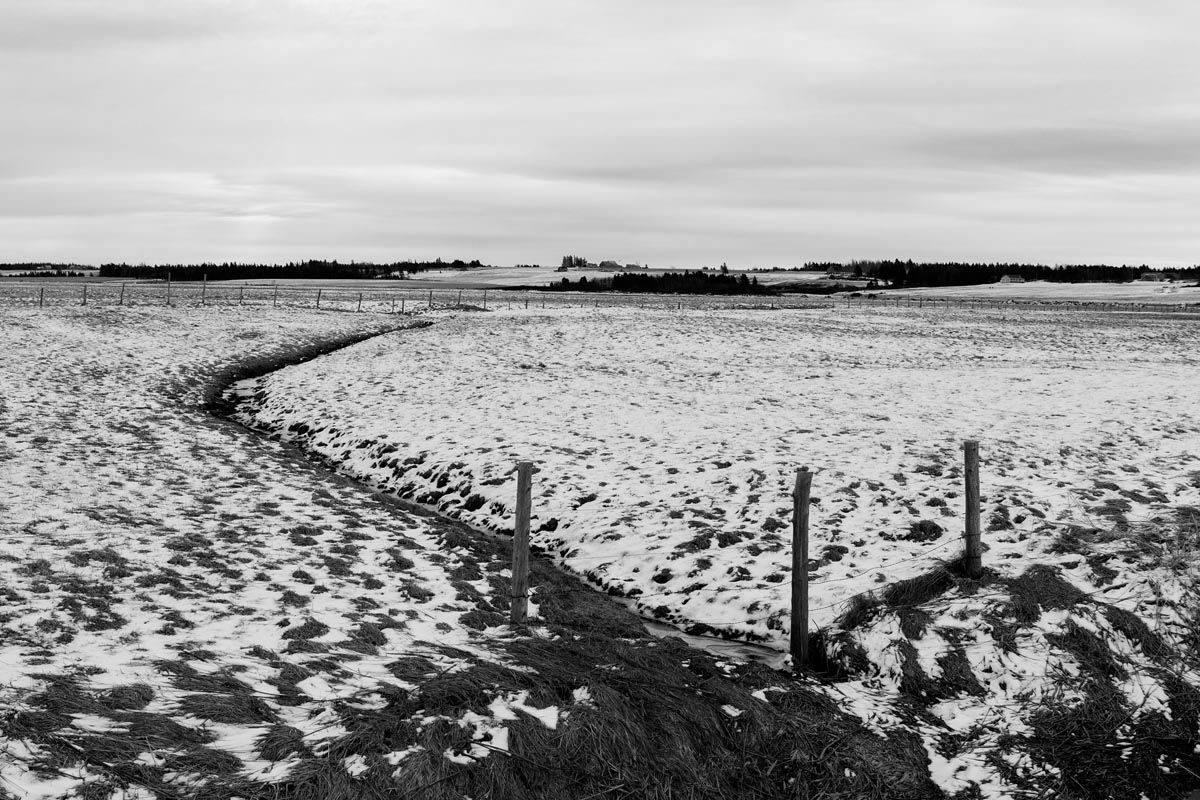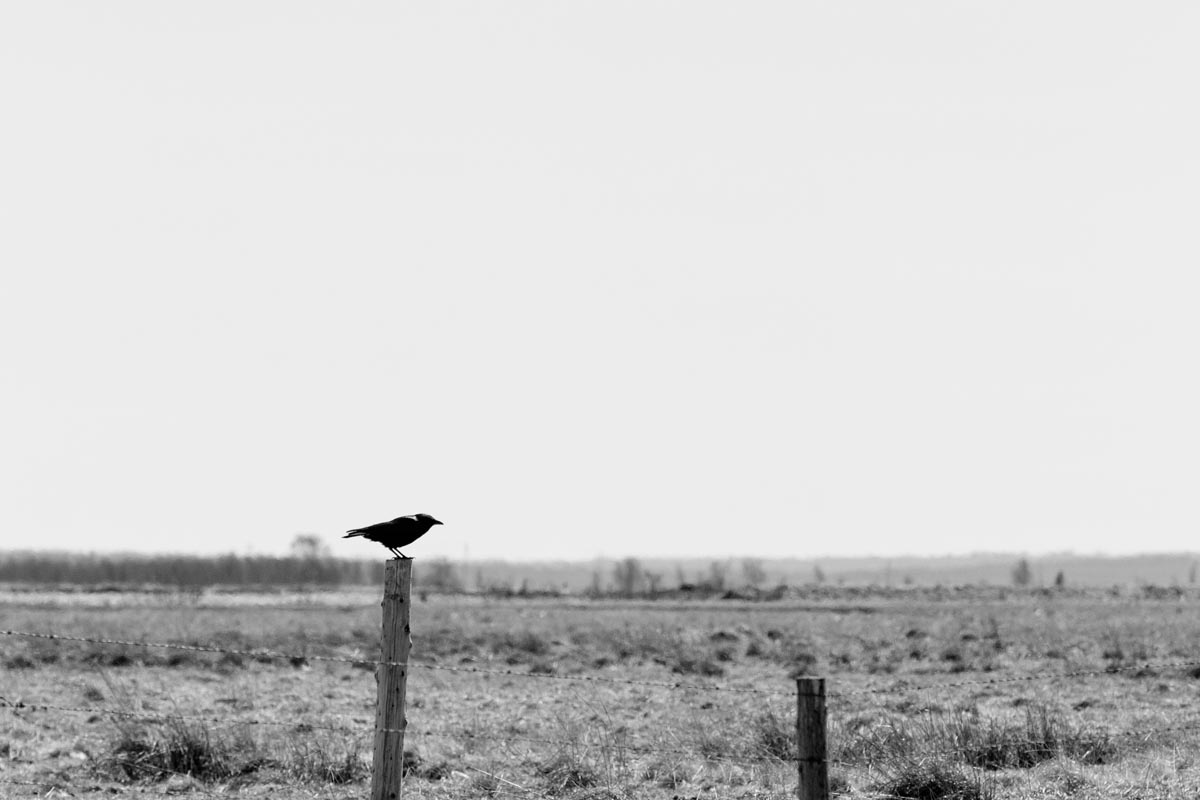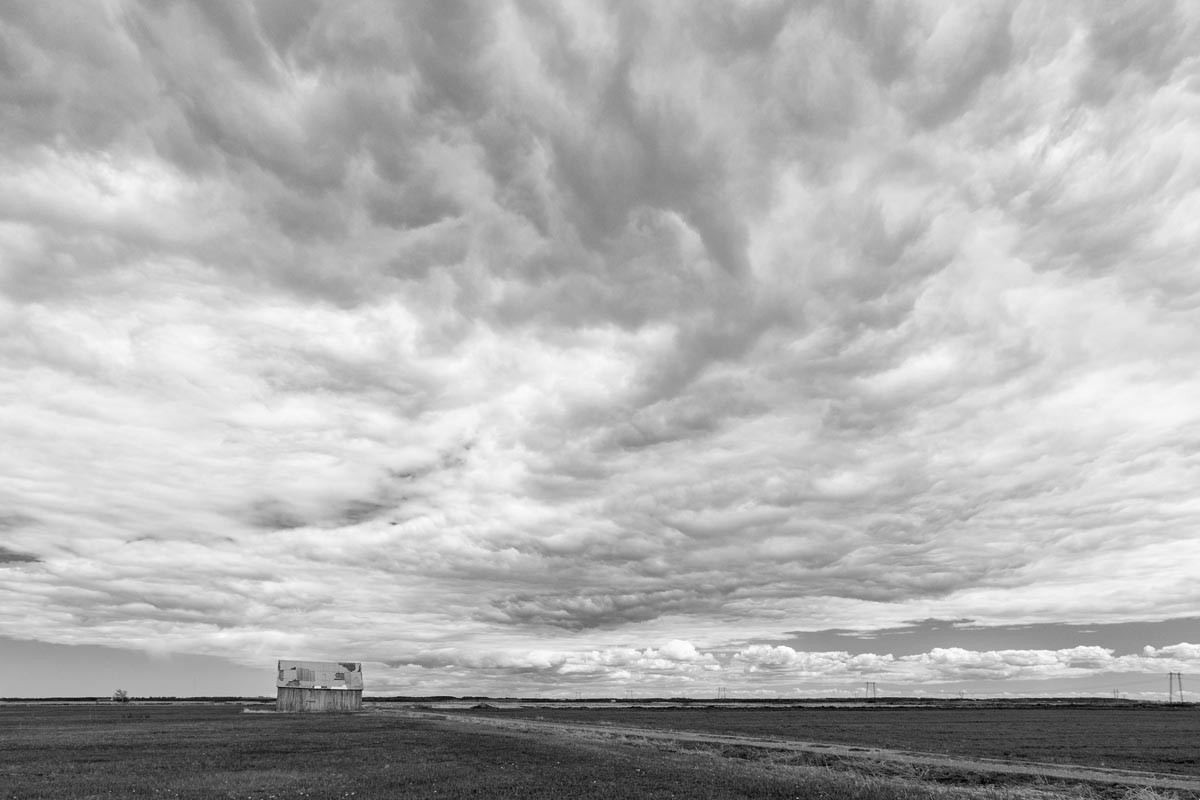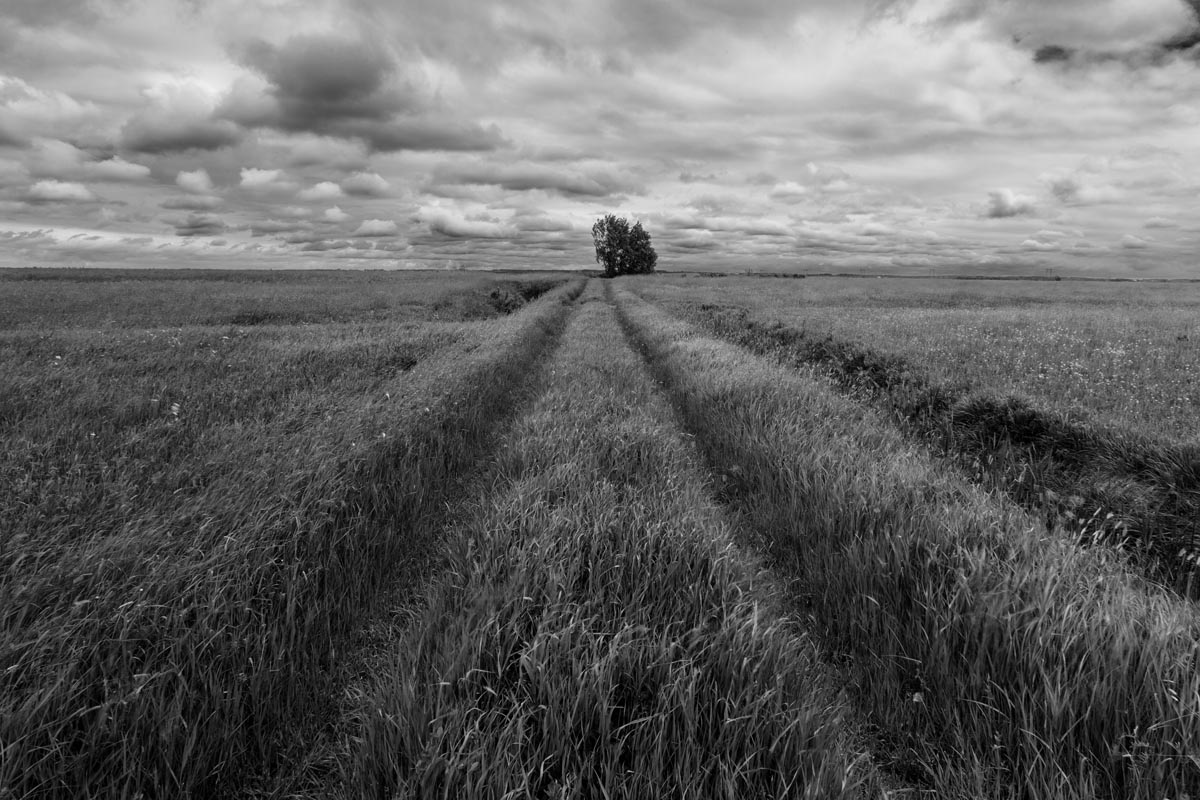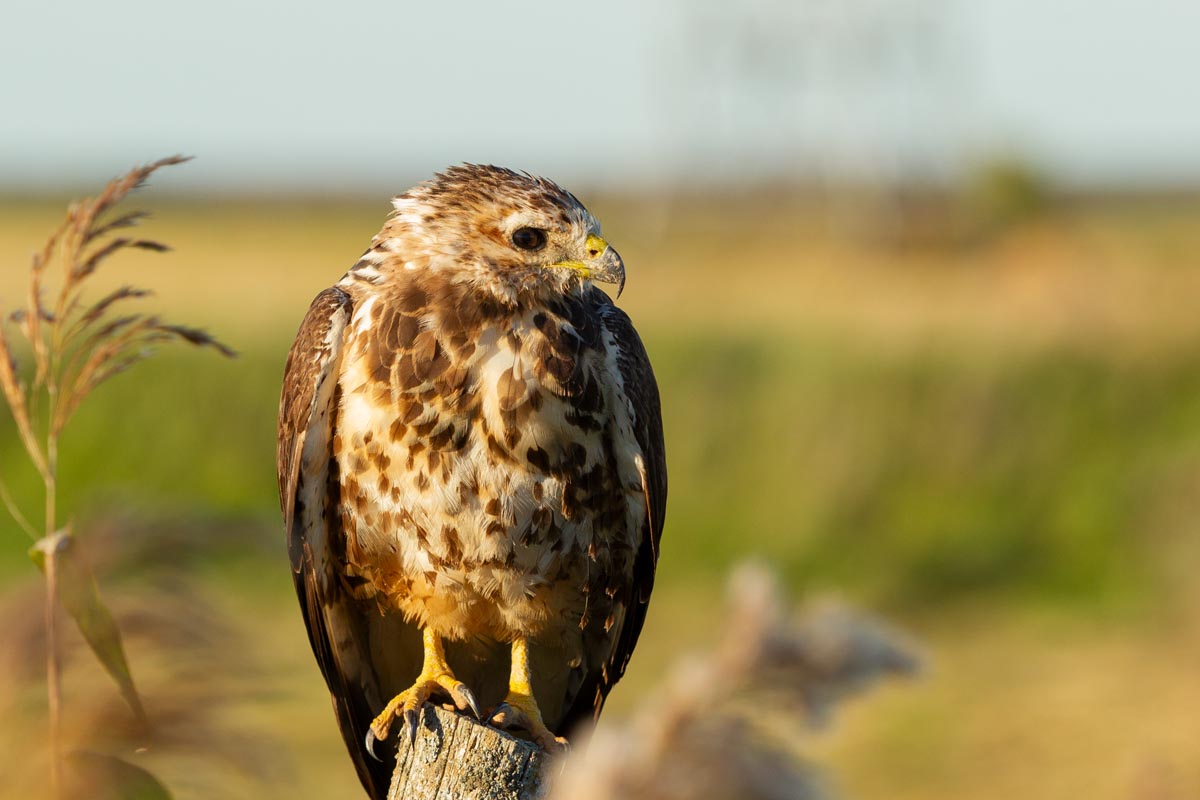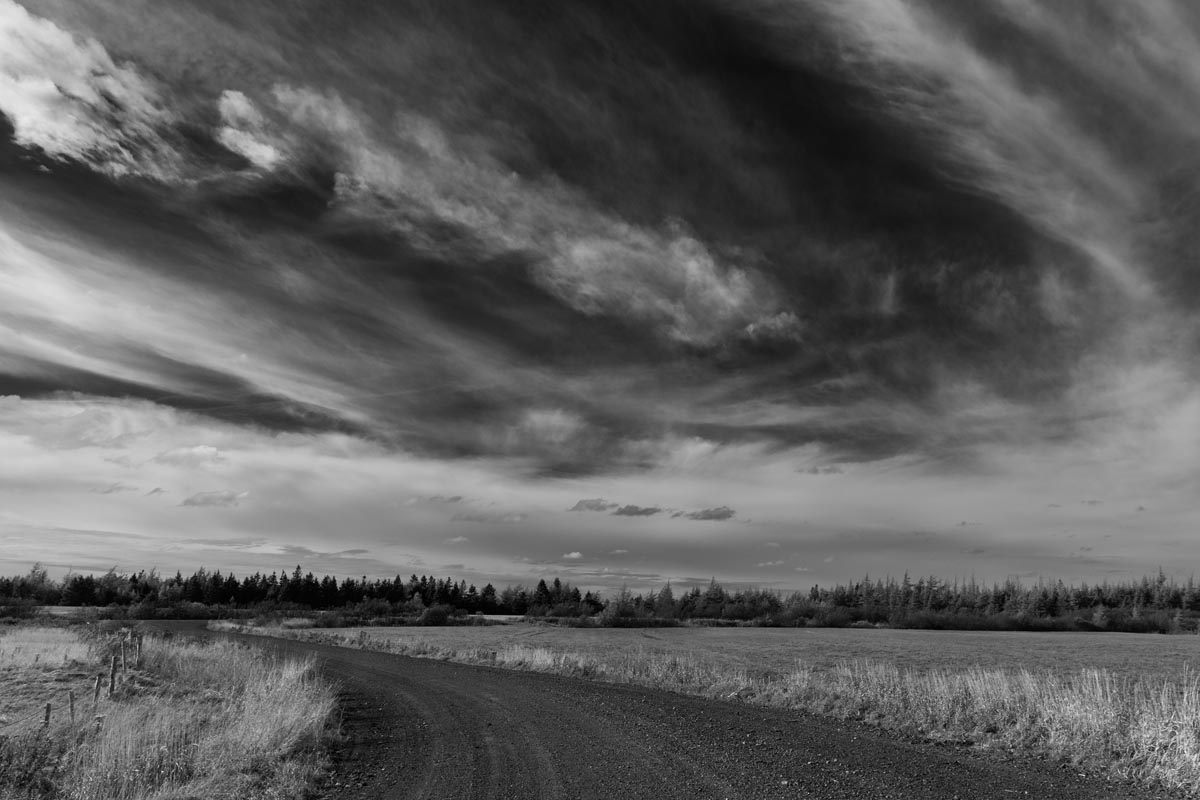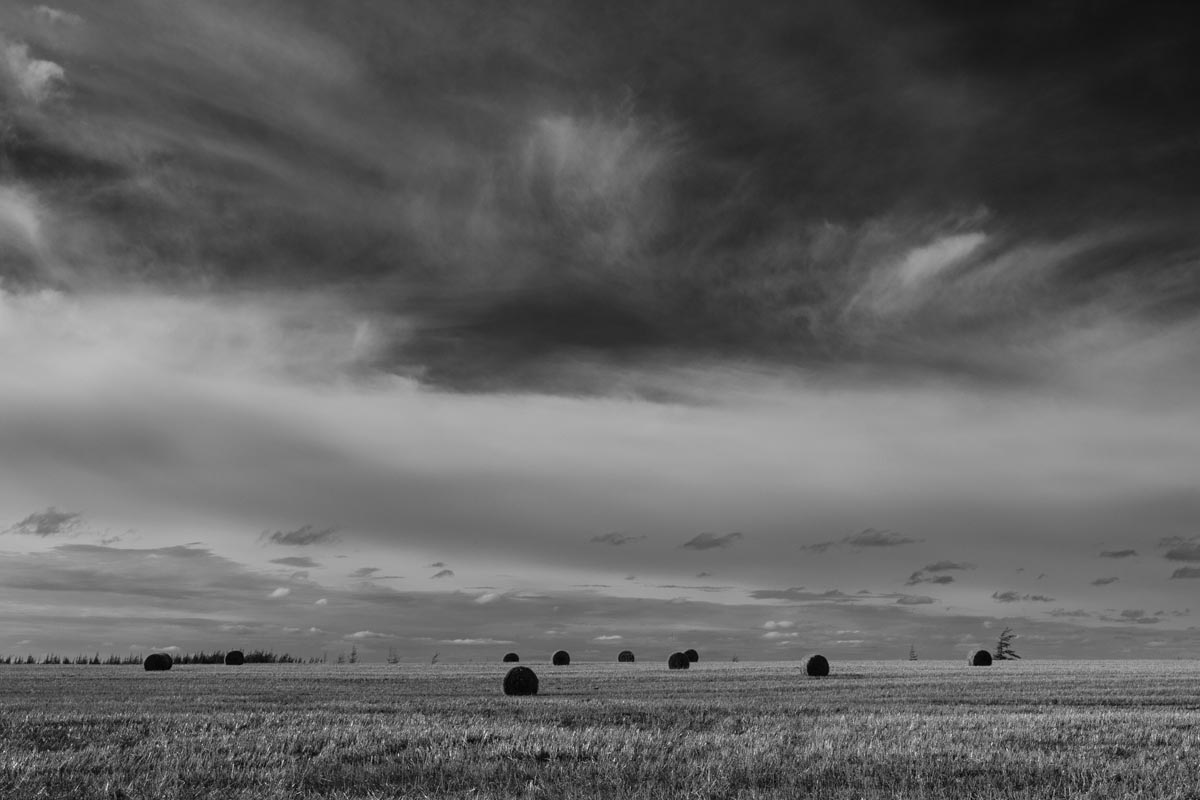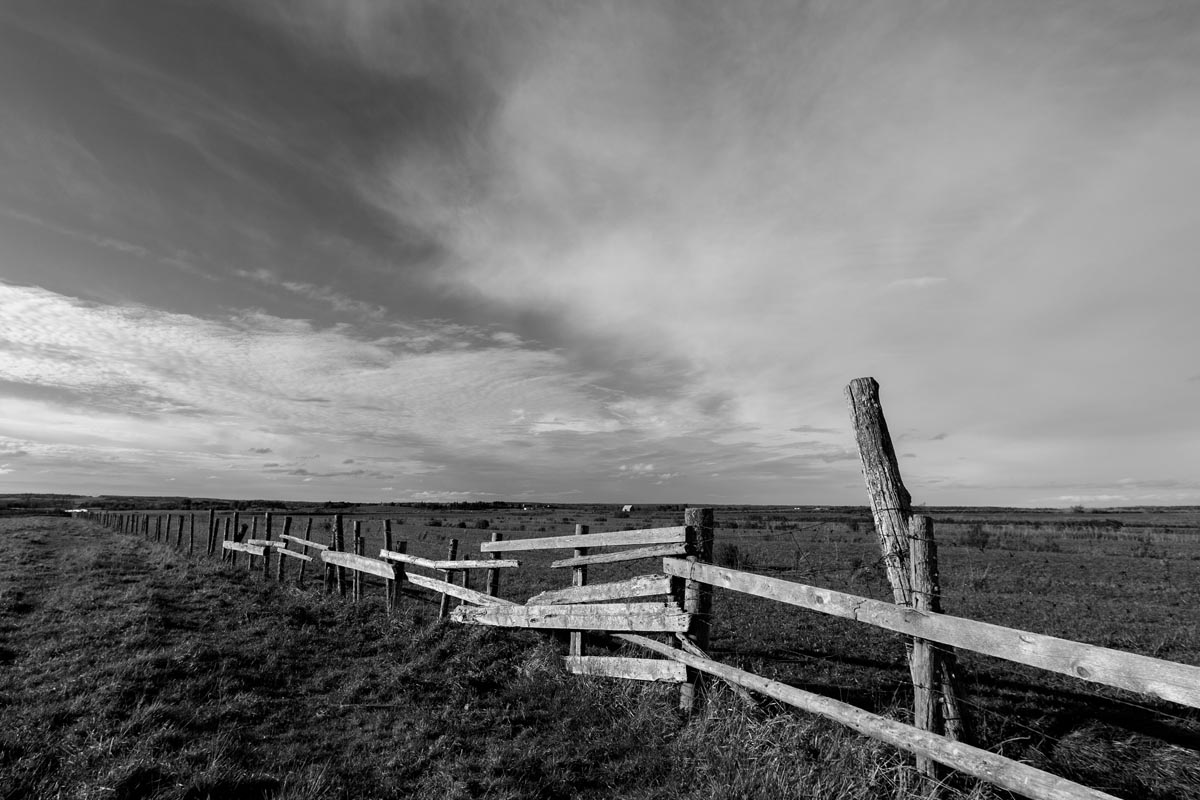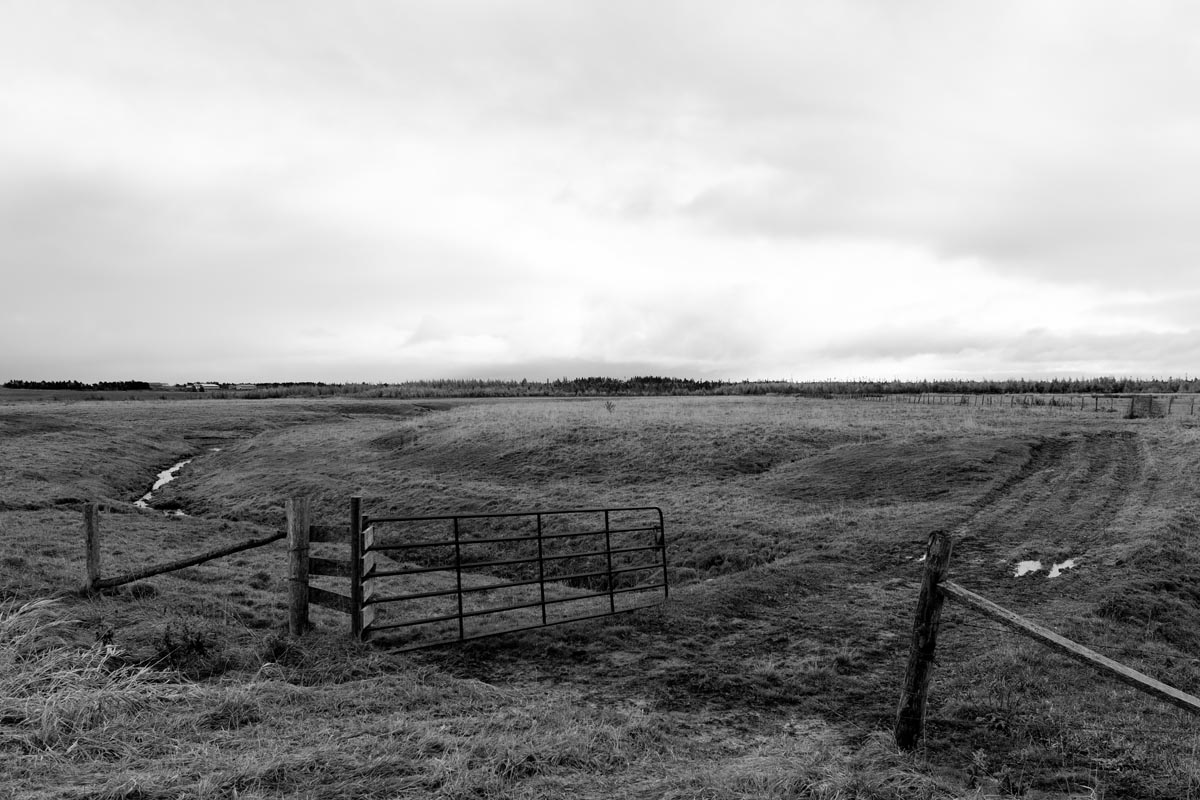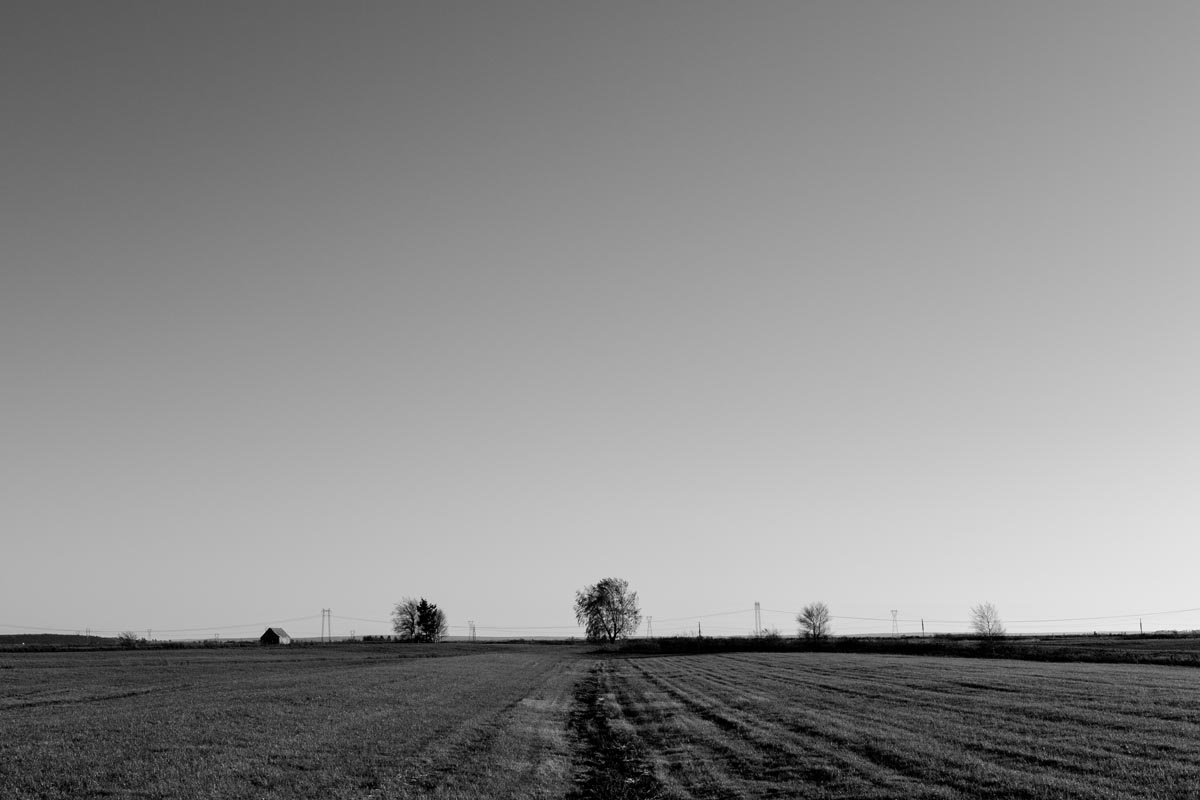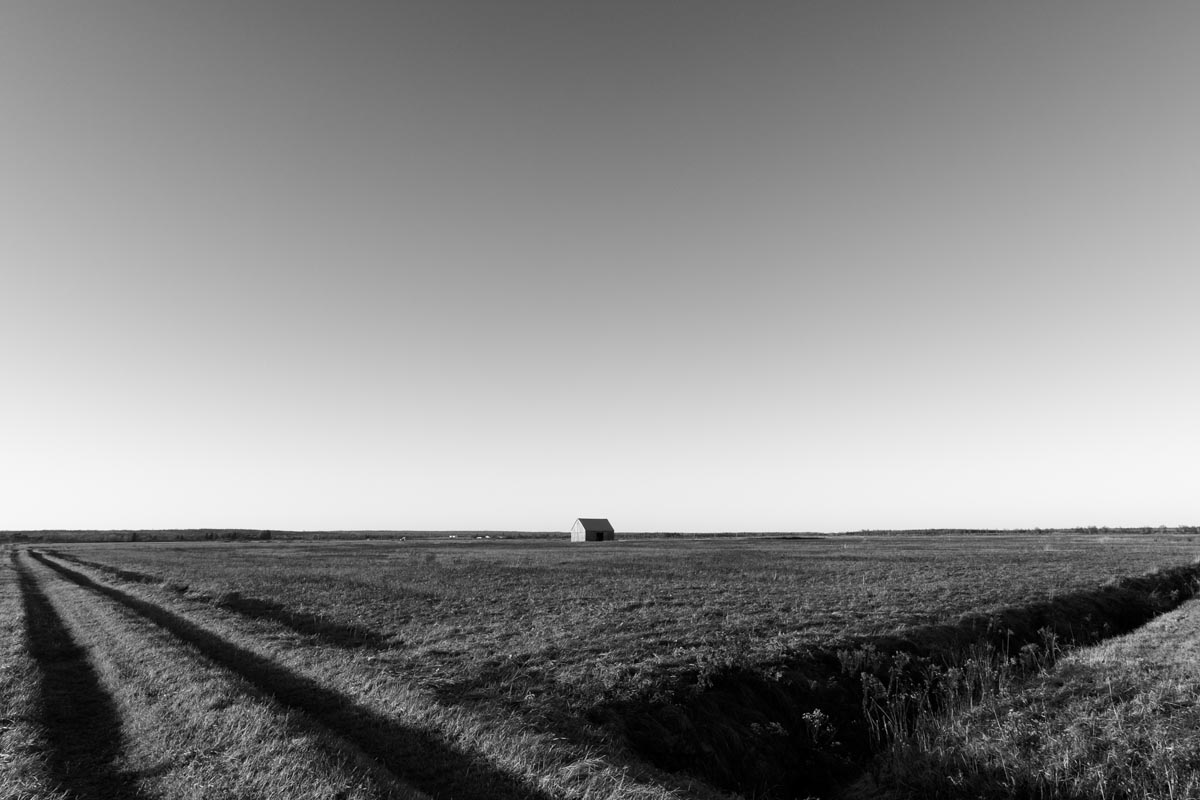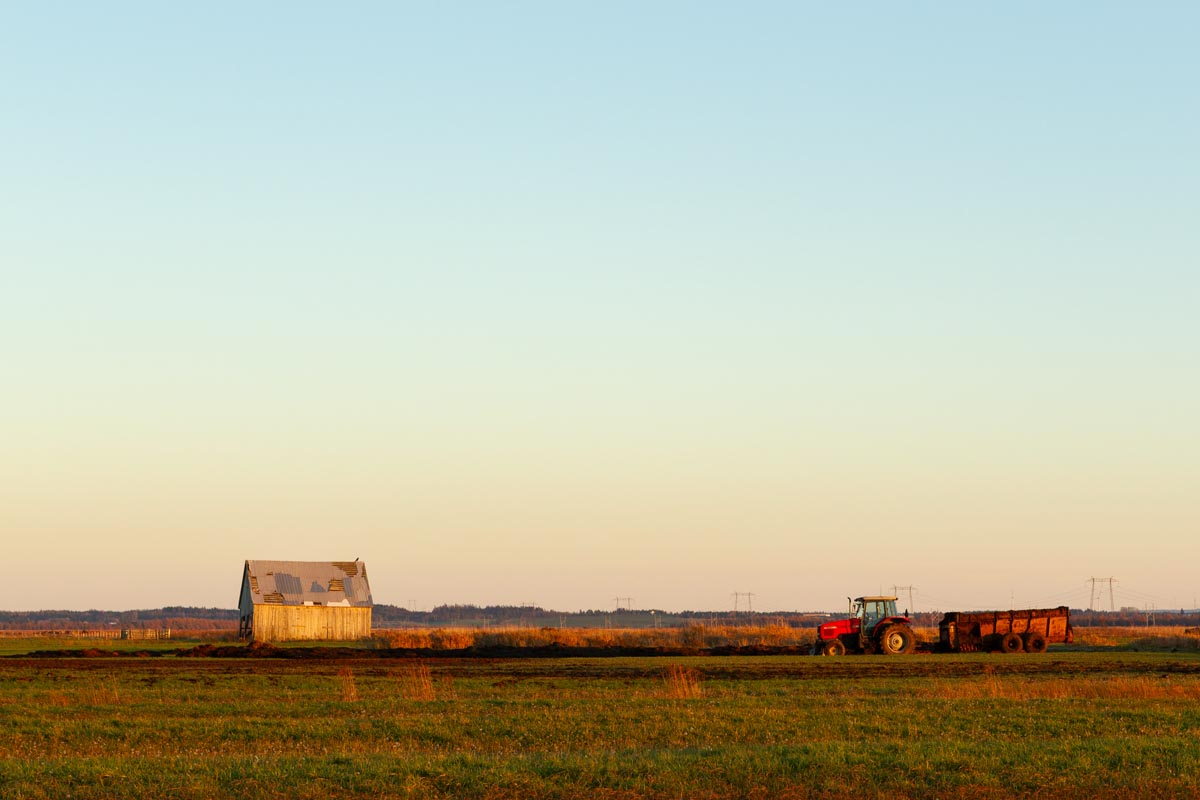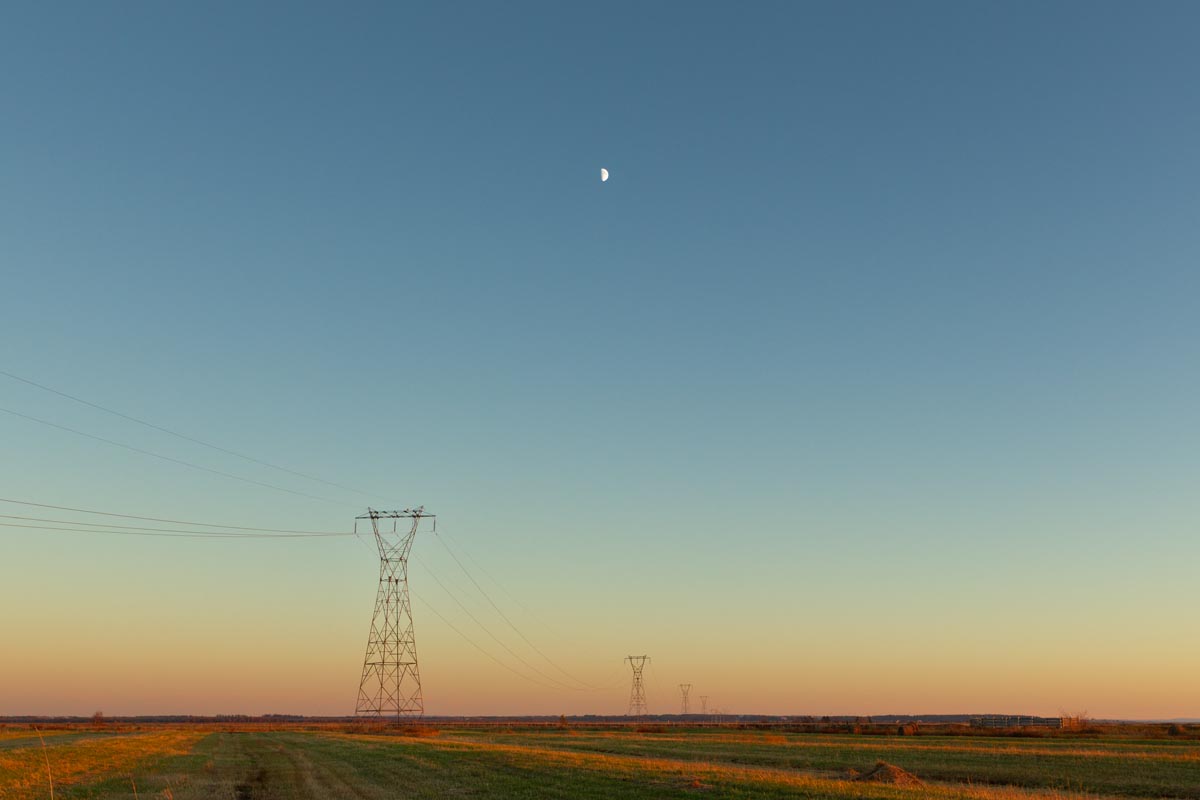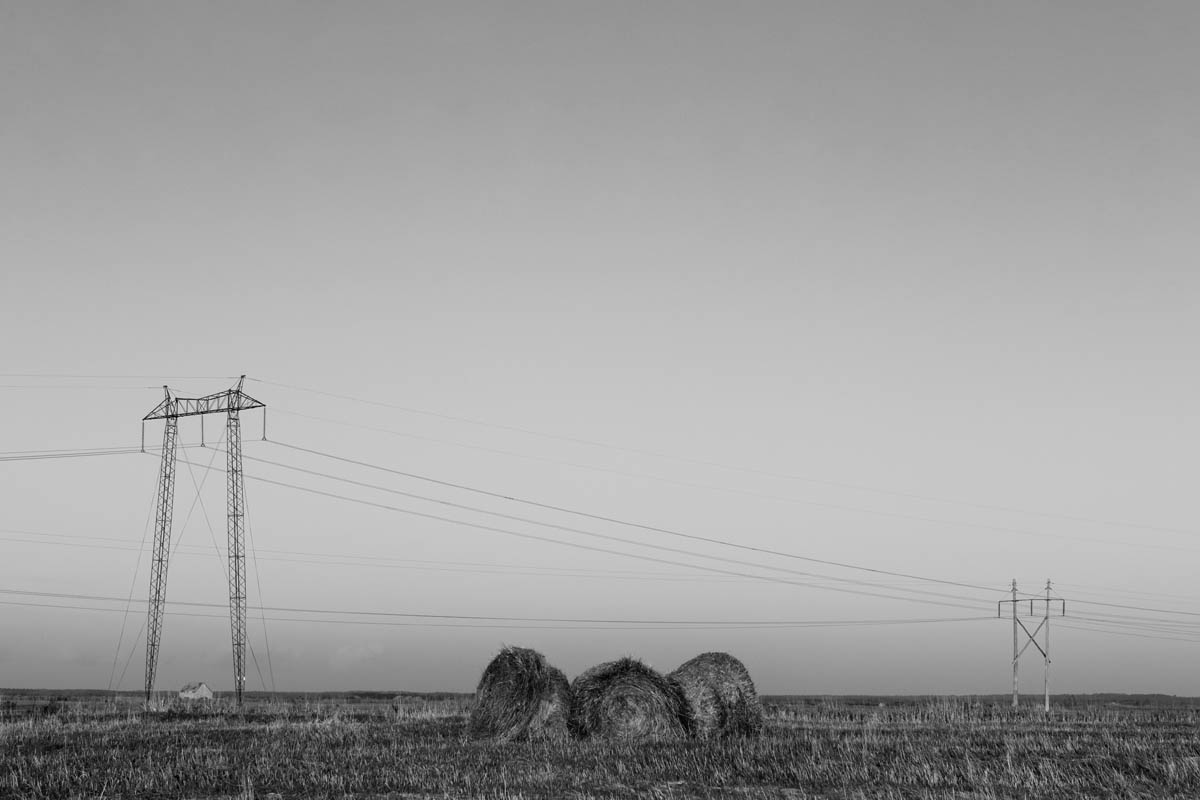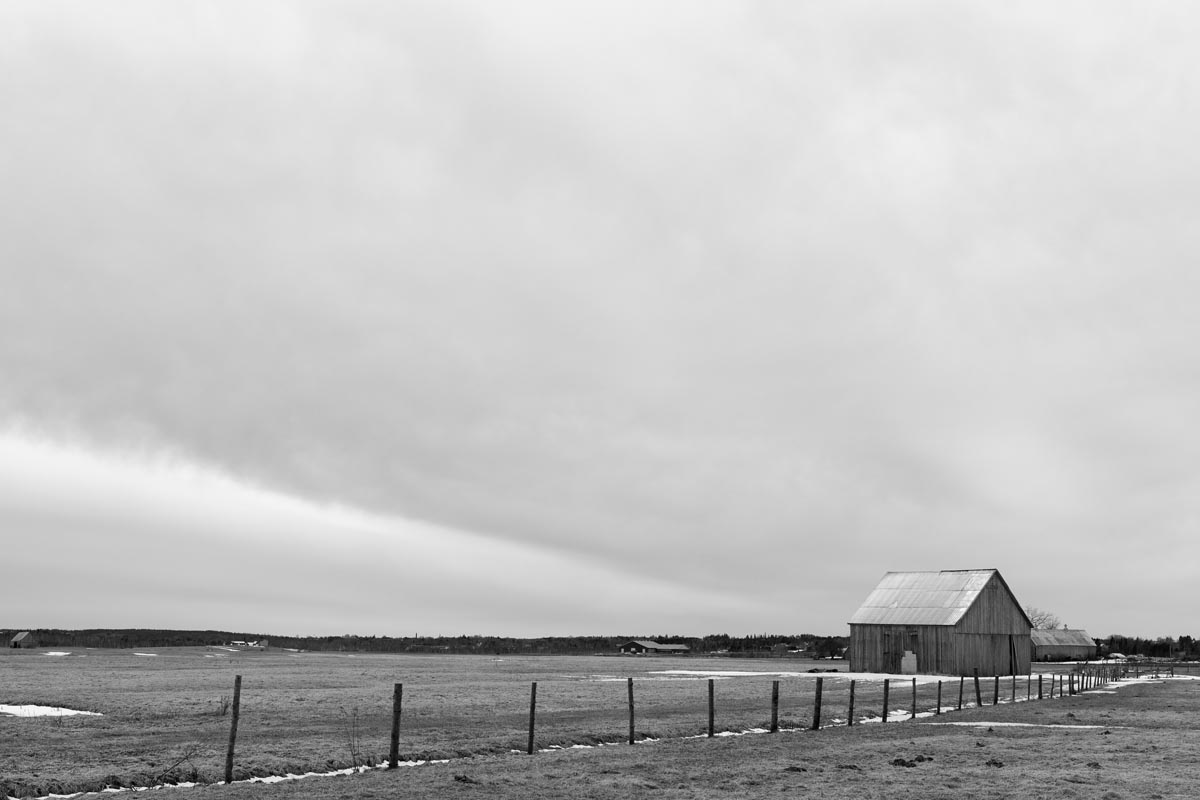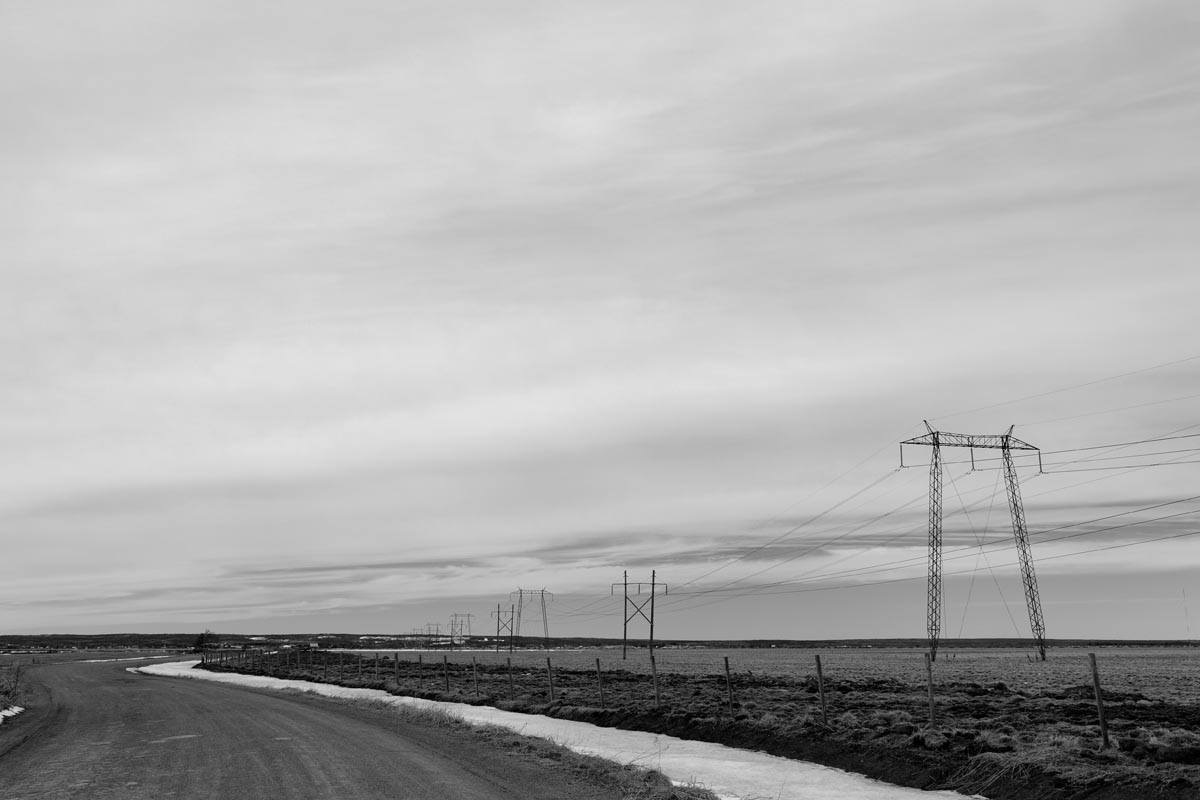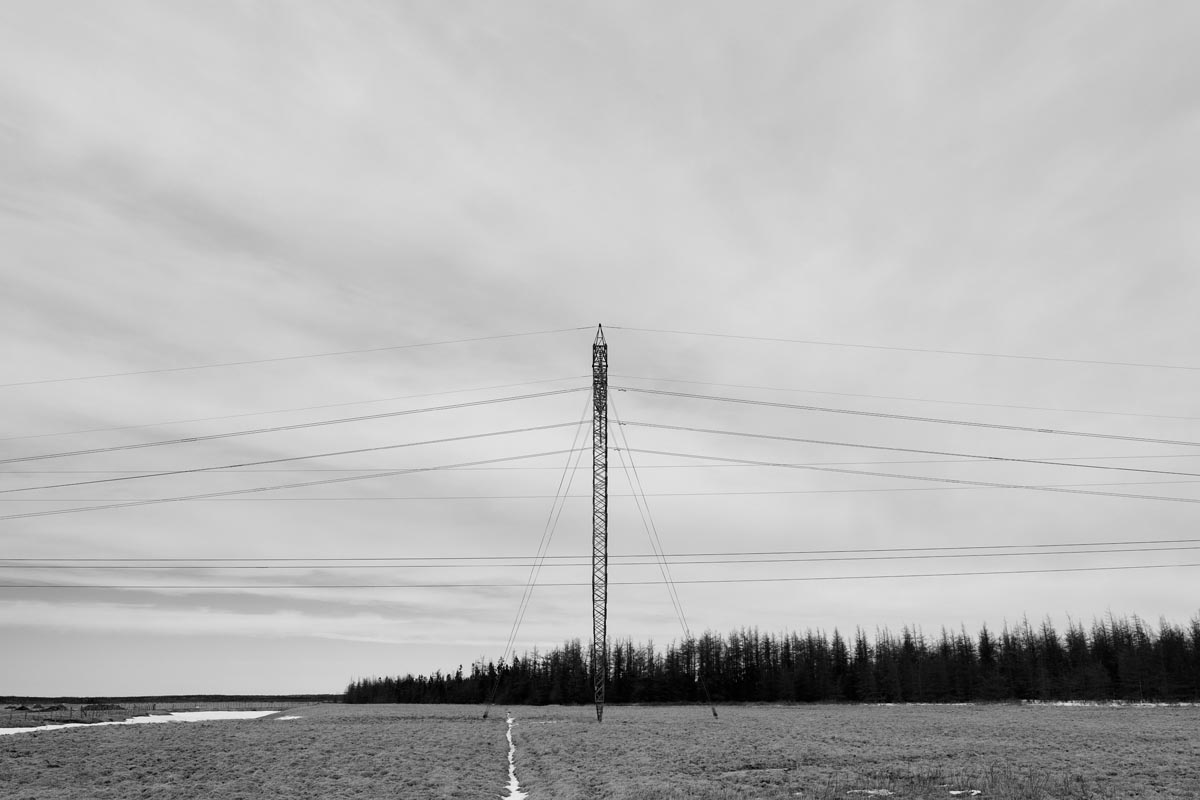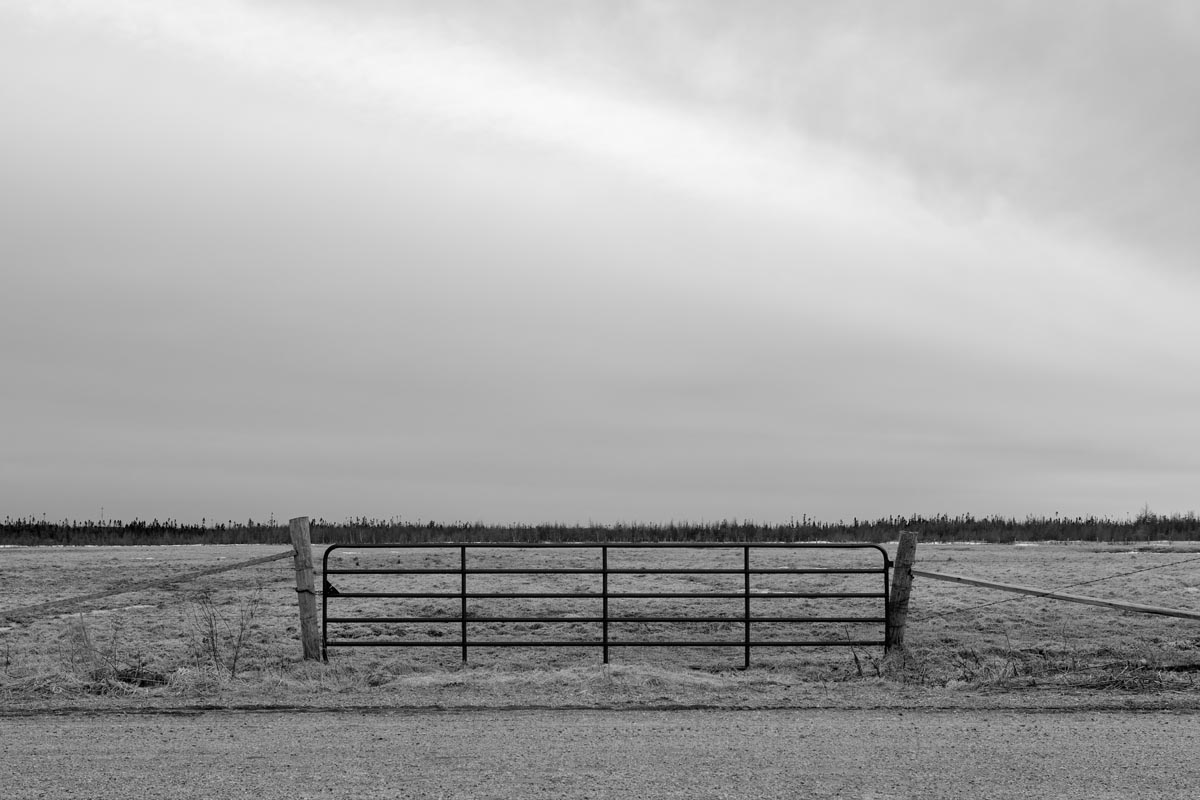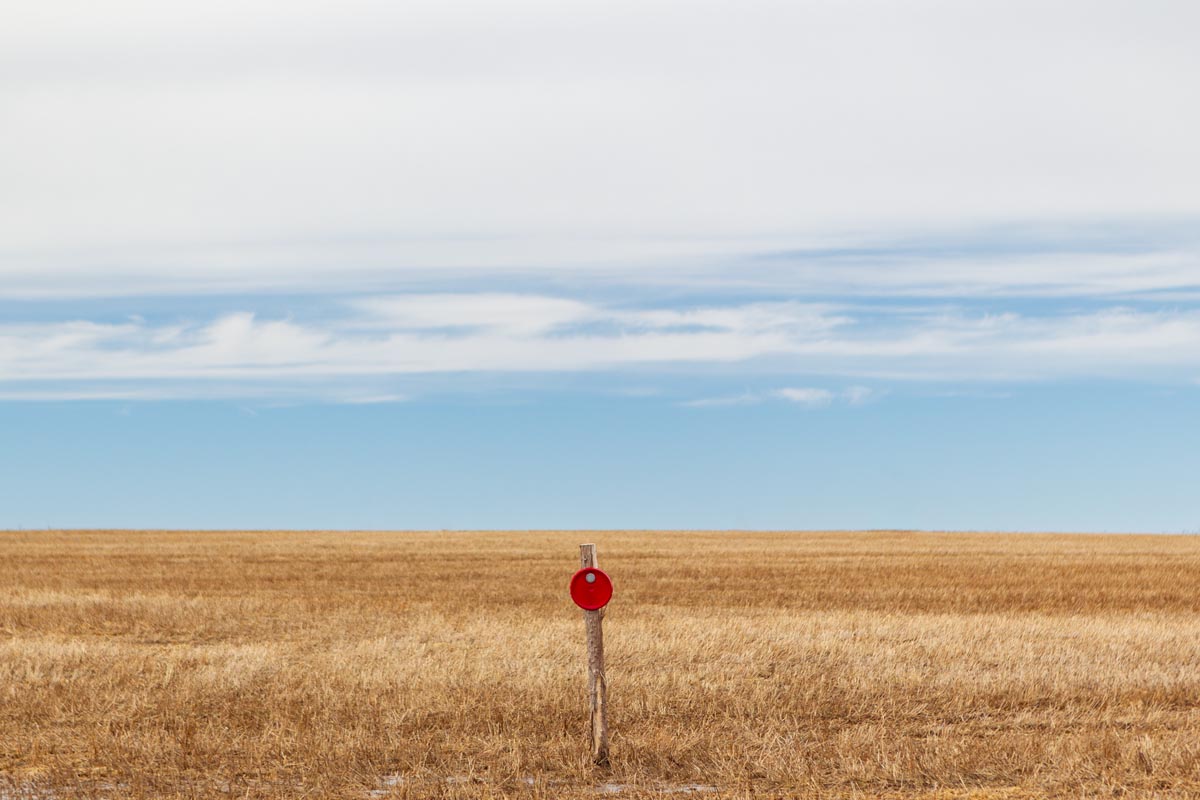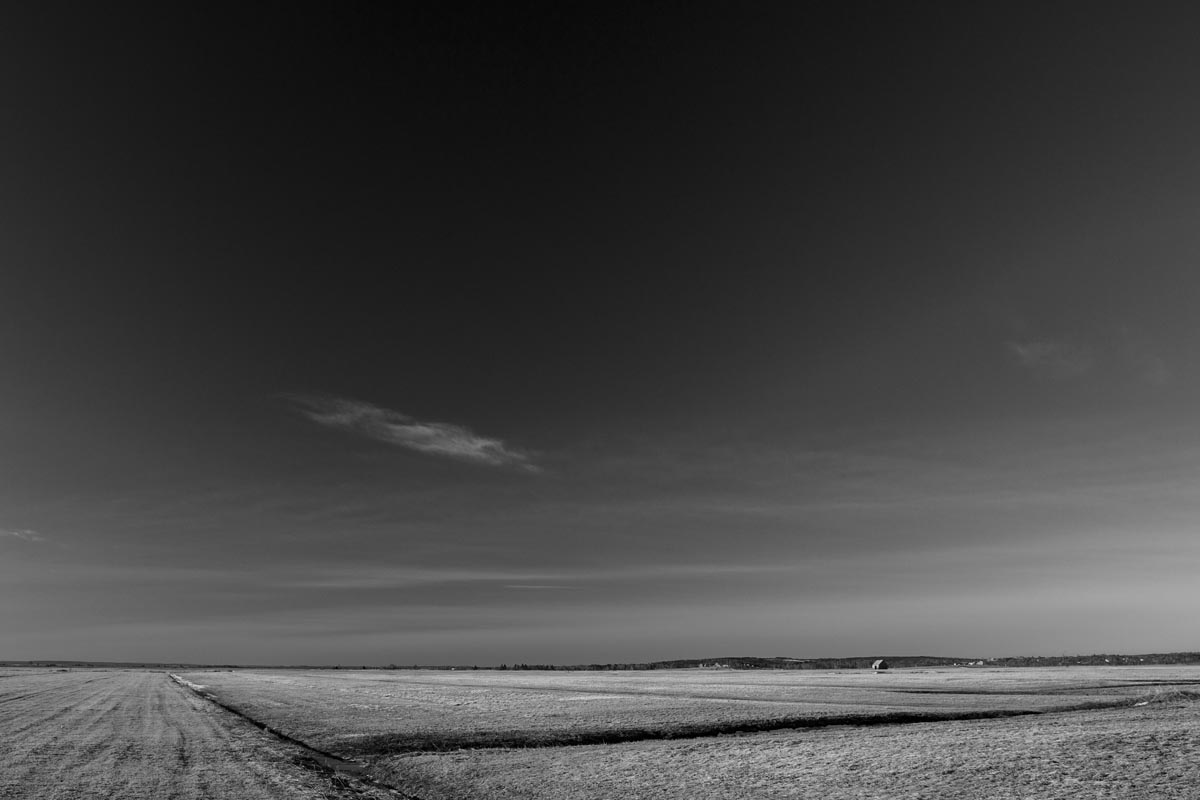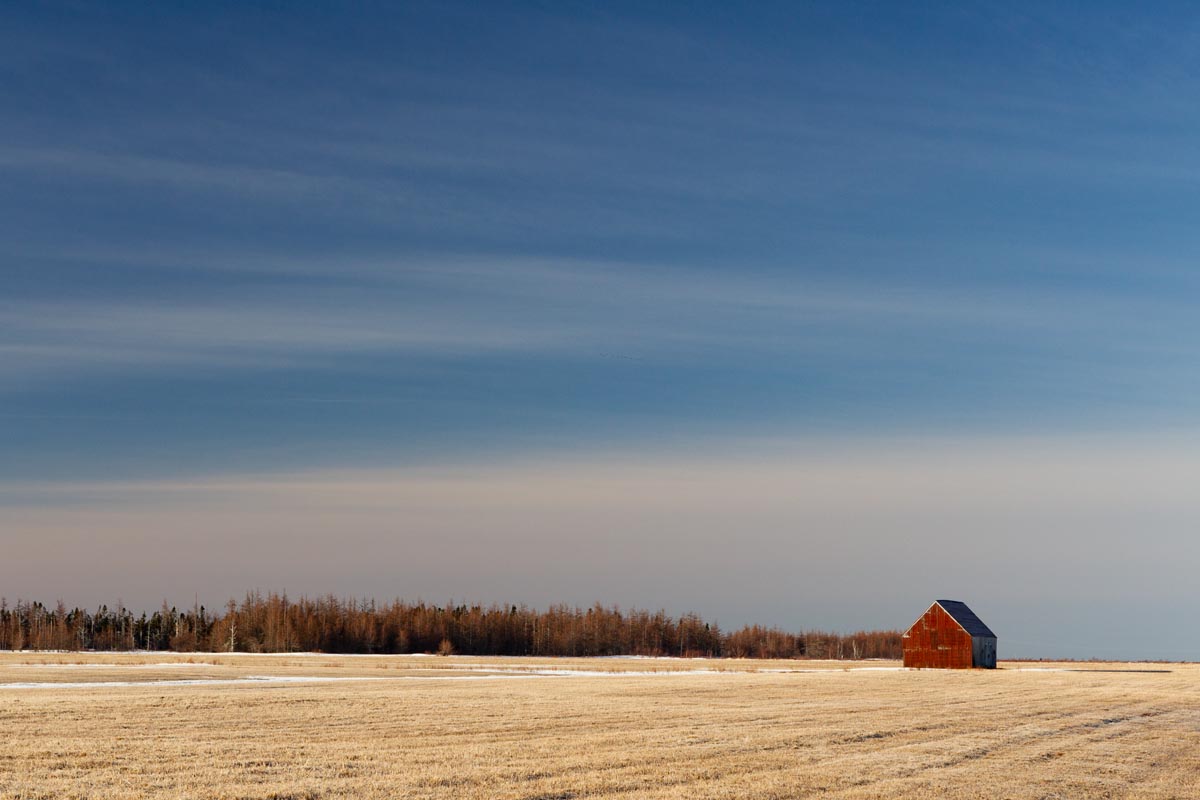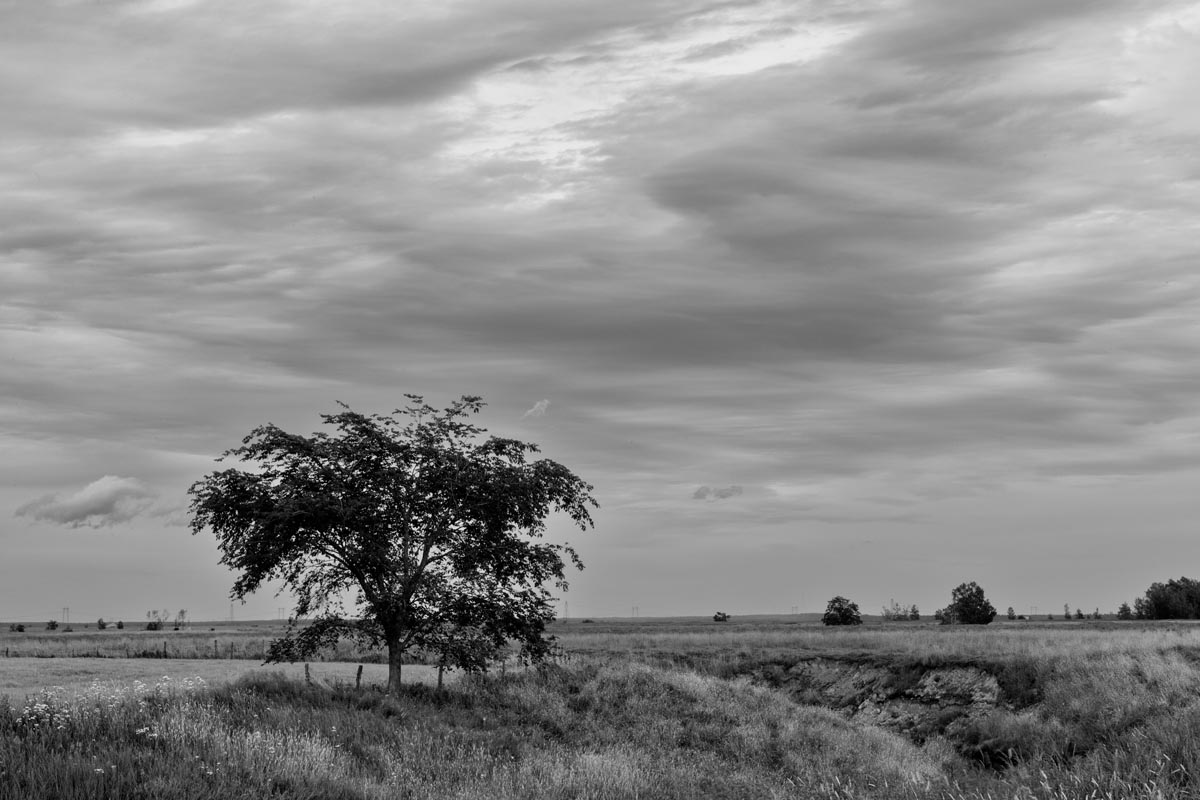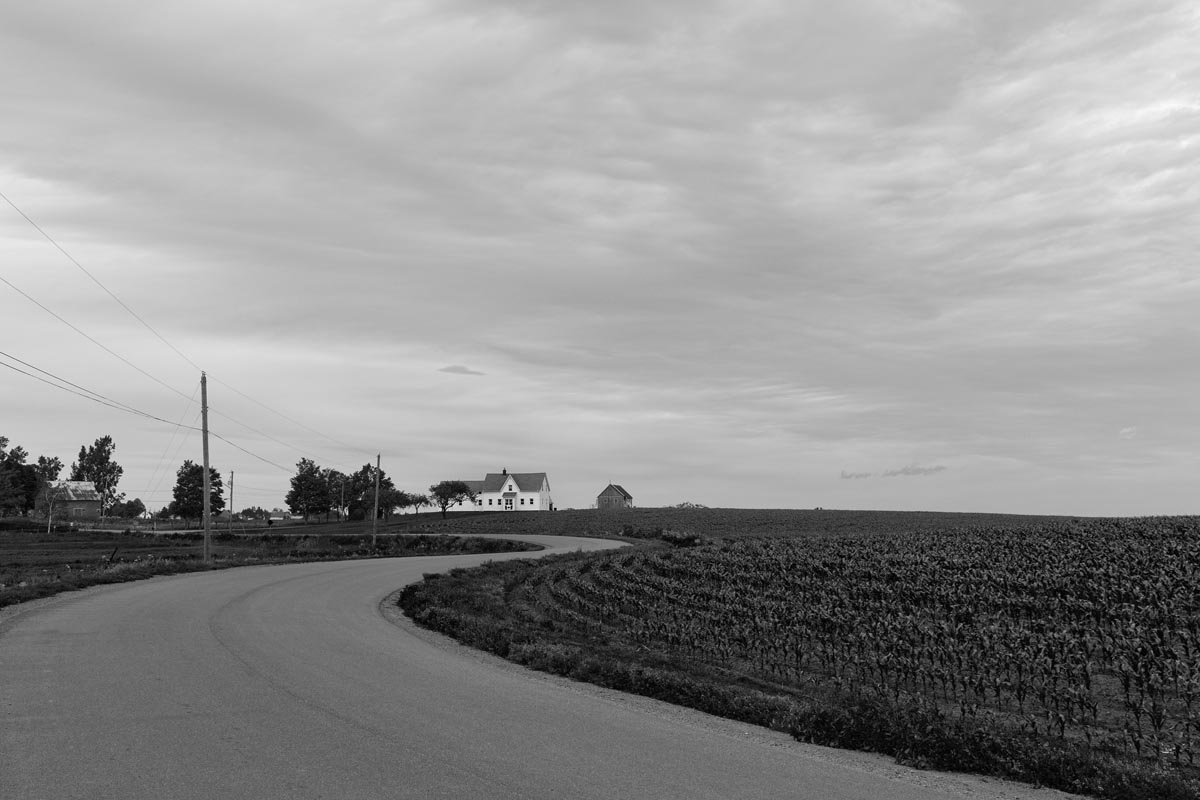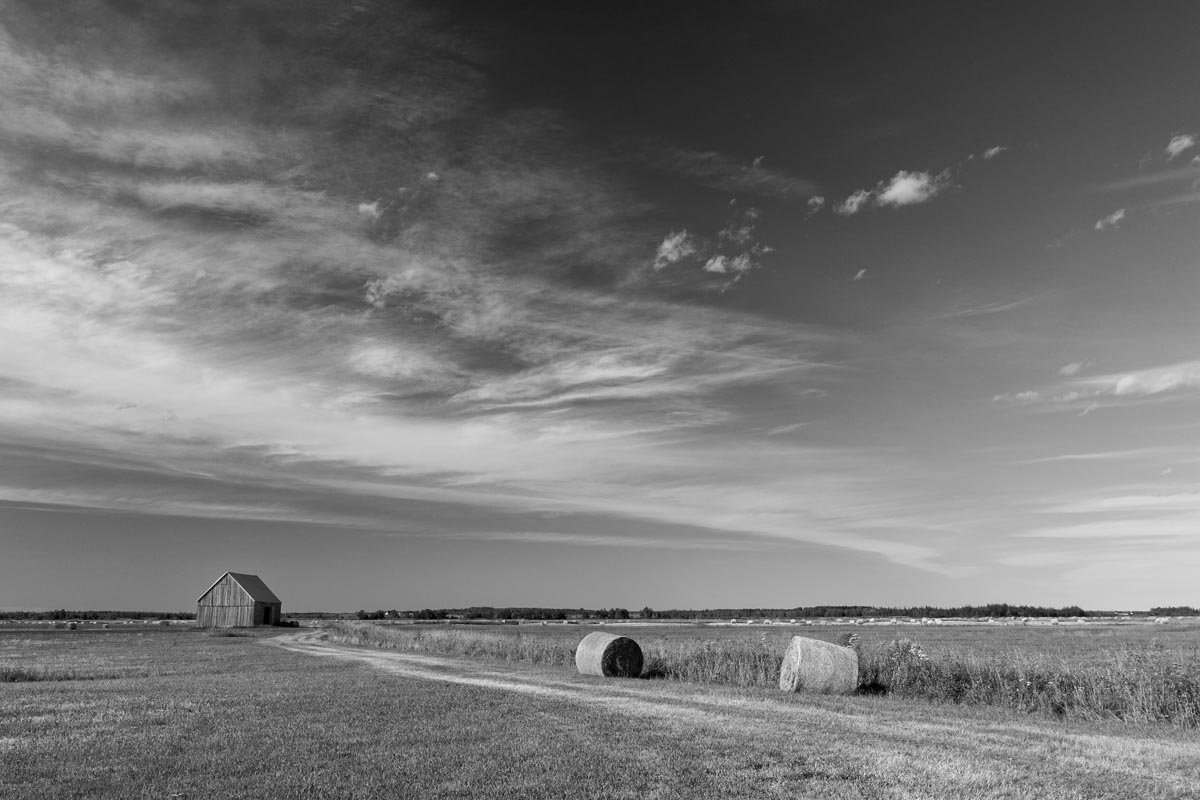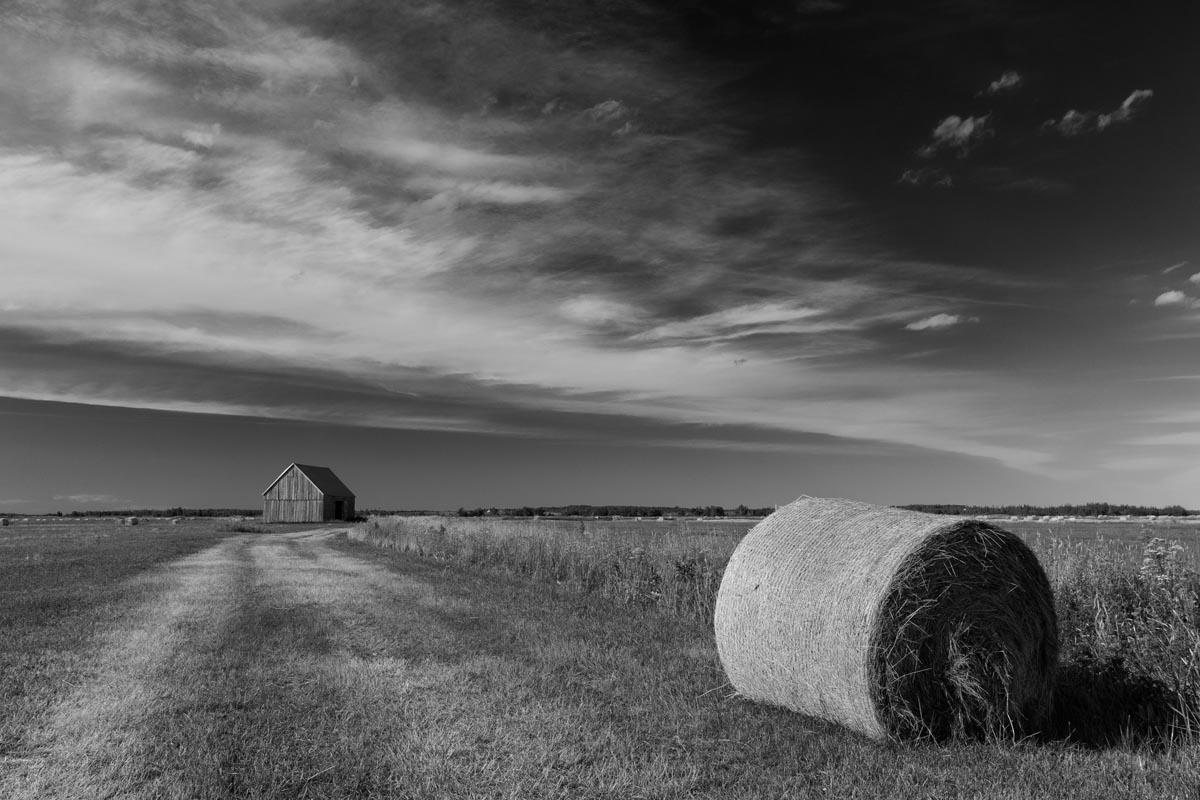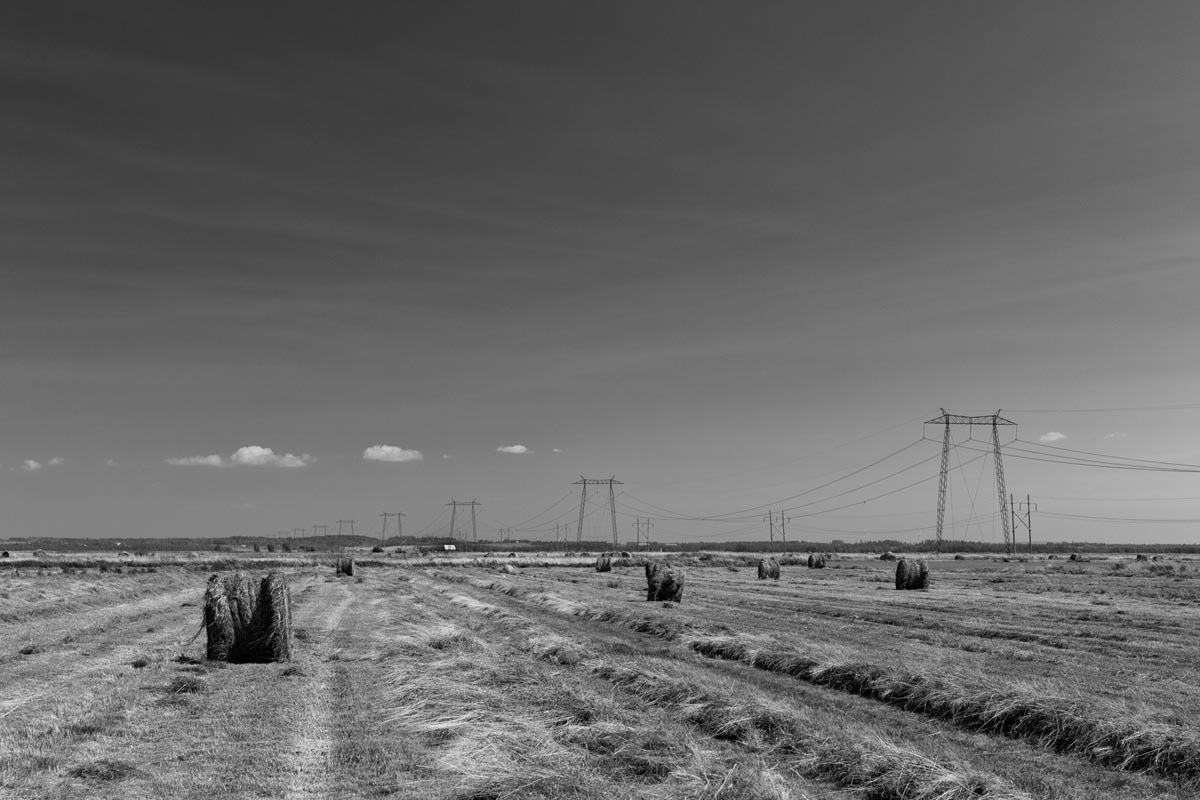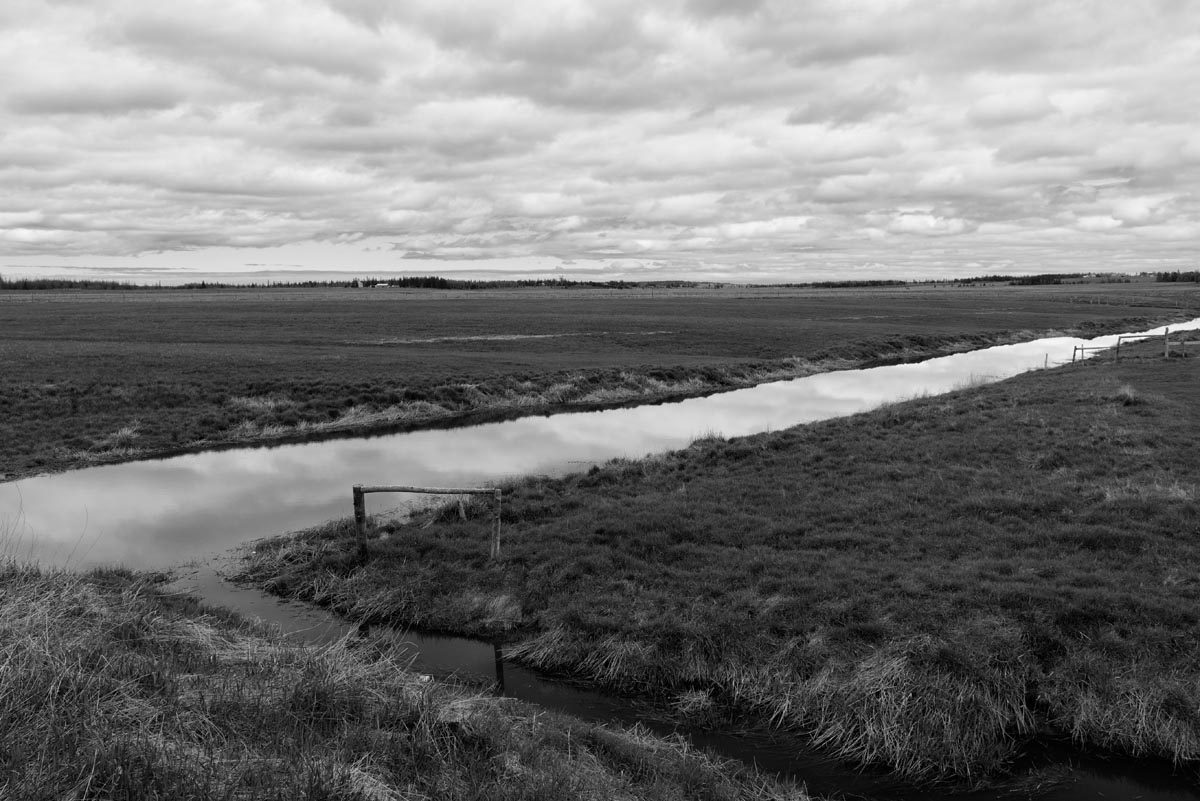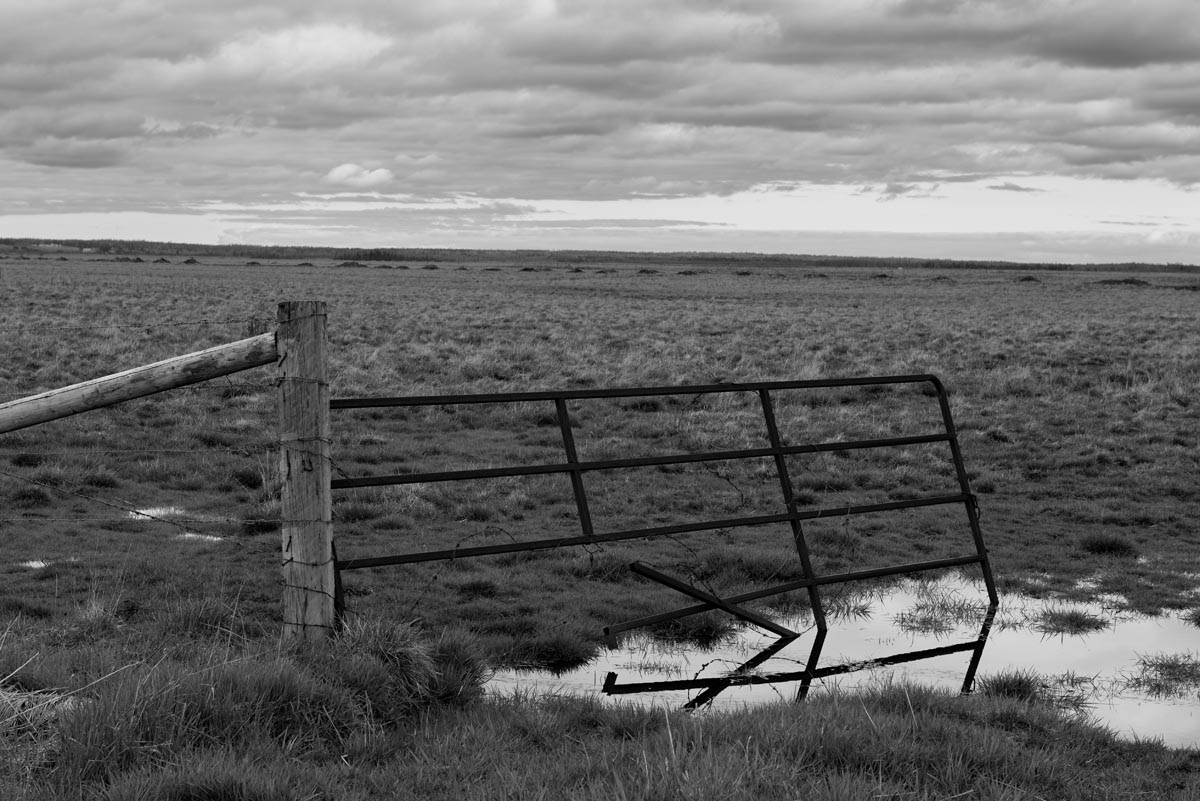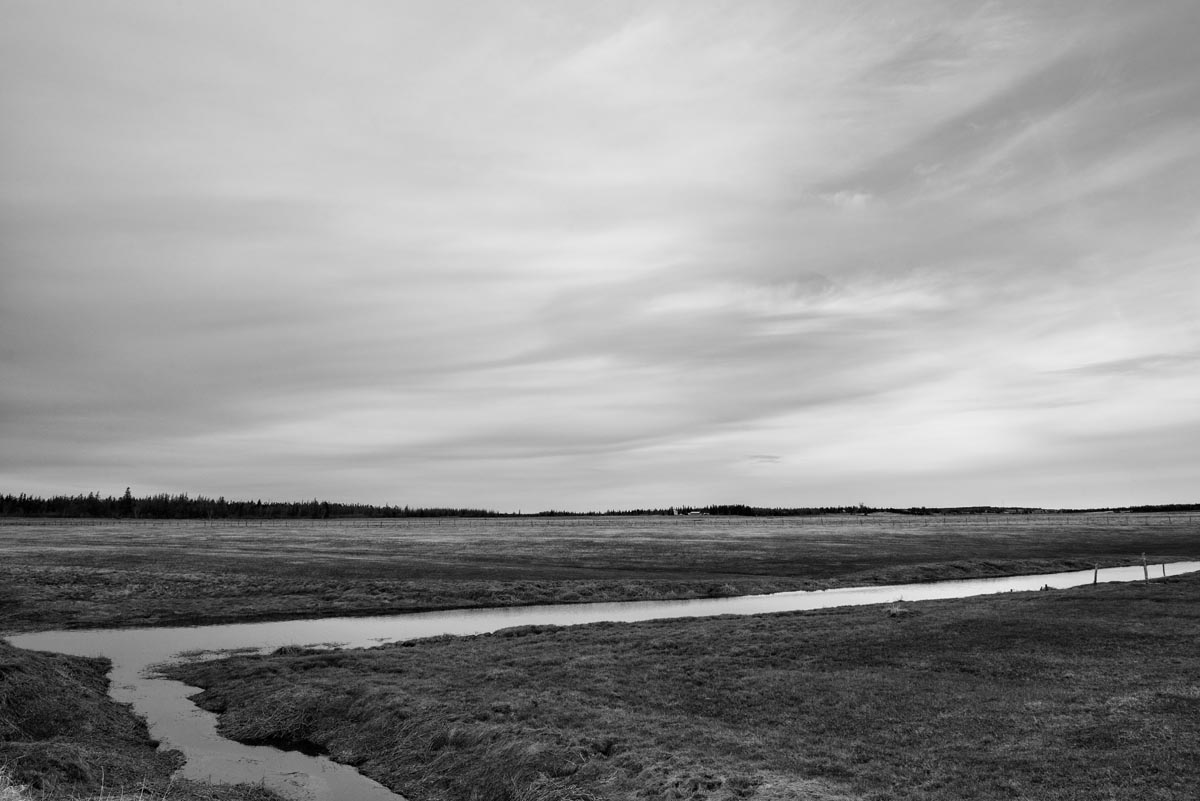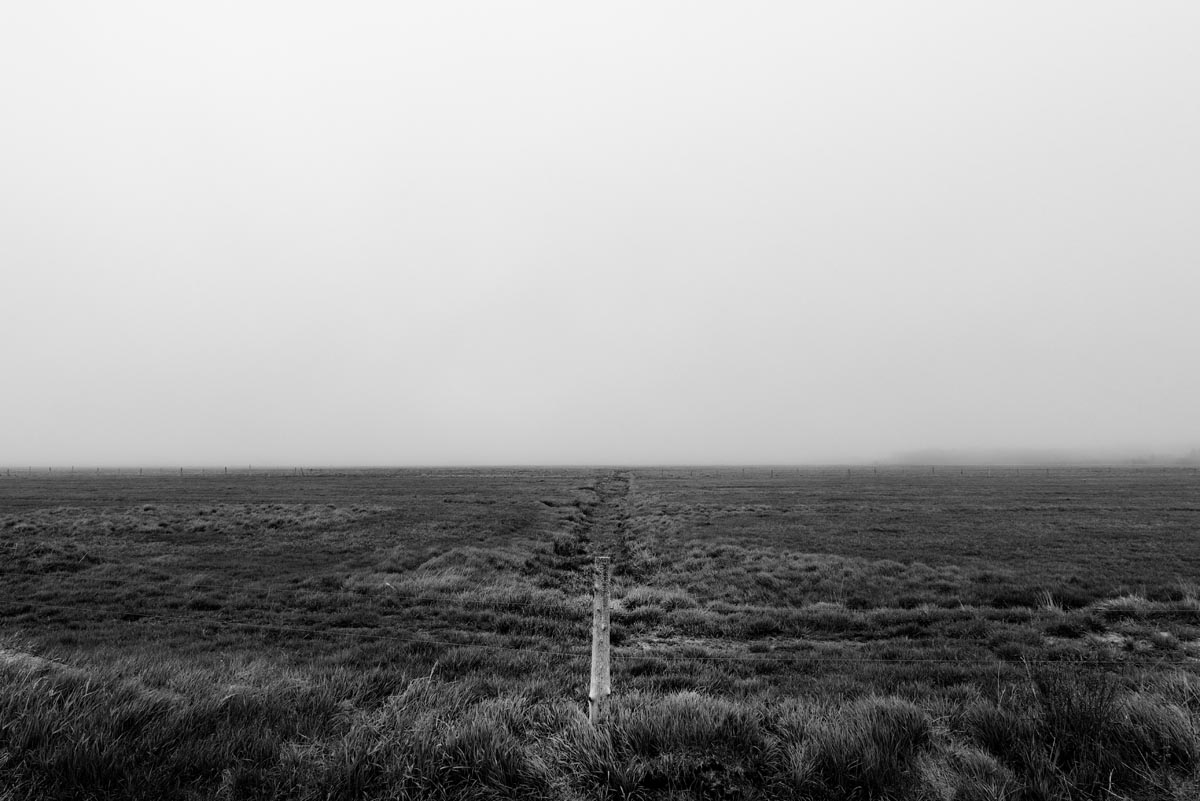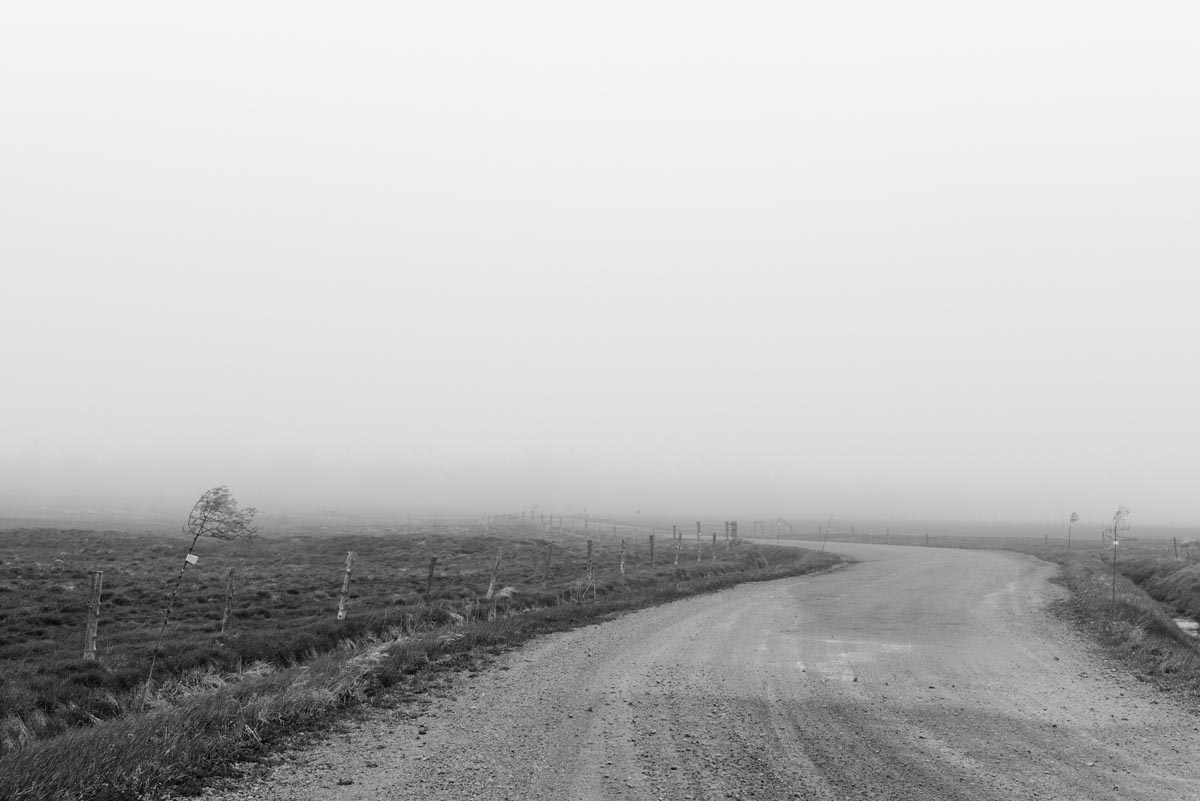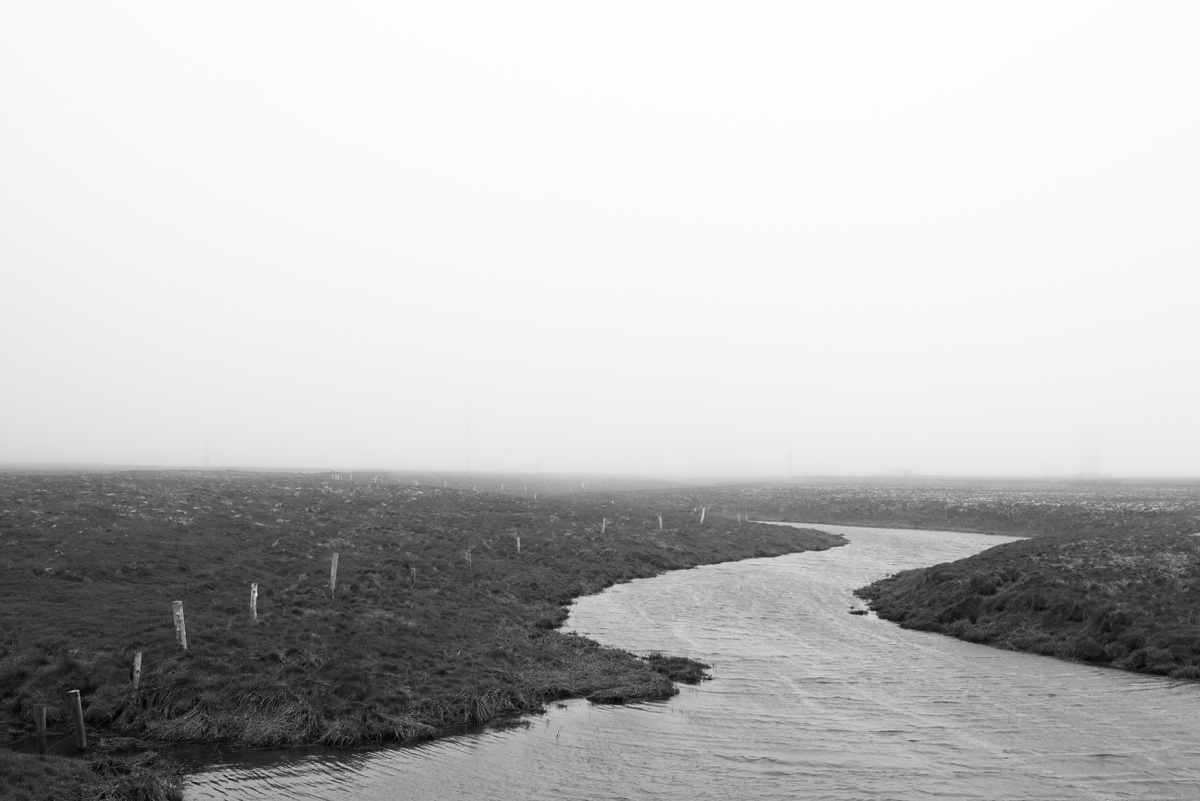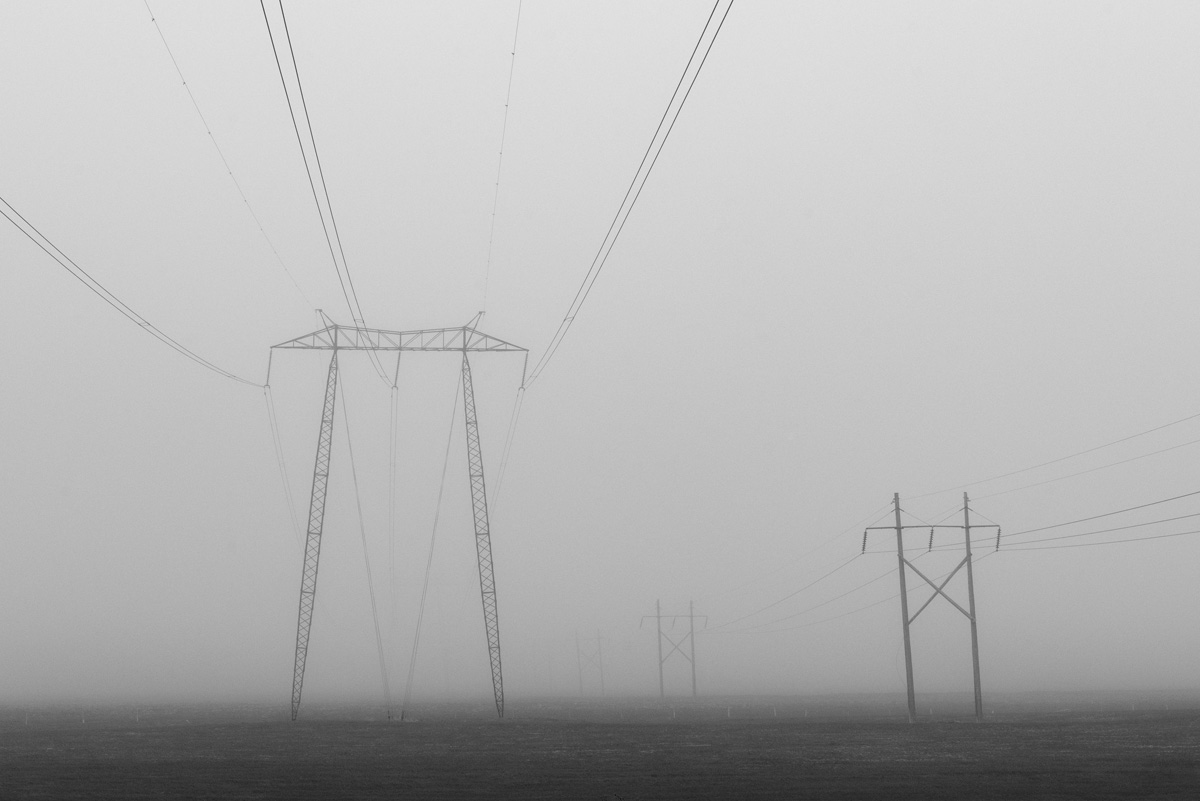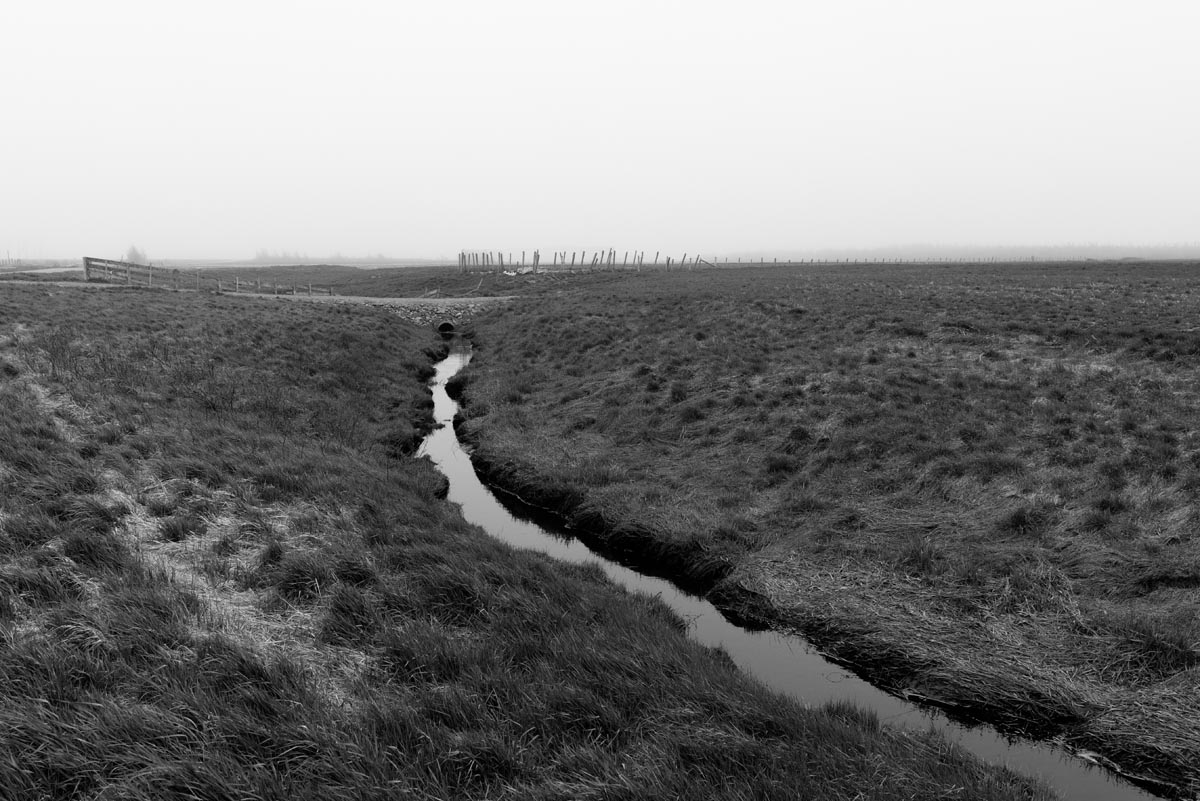Tantramar Marsh
The Tantramar Marsh area near Sackville, New Brunswick, is one of my favourite places to photograph. I first visited in 1996, and have been returning on a regular basis since 2006. The view hasn't changed much, or has it? Most of the marsh hay barns that once dotted the landscape have been lost to time and vandalism. Gone, too, are the steel towers and antennas from the now-closed Radio Canada International shortwave site, which were an iconic part of the landscape for over 60 years. Otherwise, it's mostly unaltered despite the passing of almost 30 years.
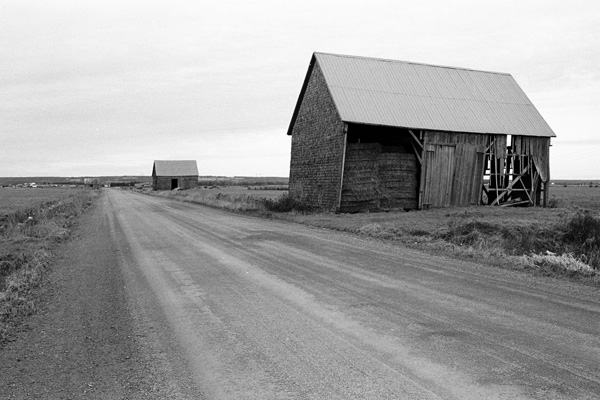
Marsh hay barns (1996)
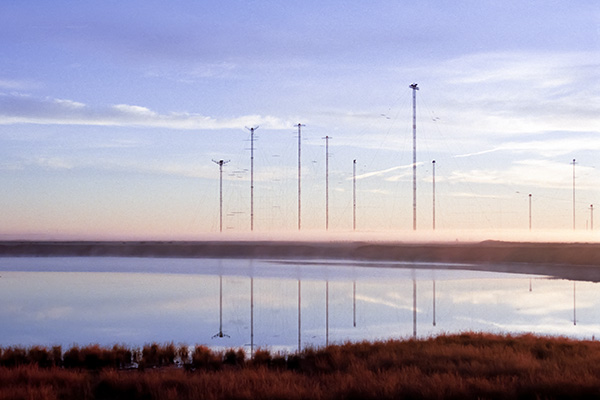
The RCI shortwave towers (1996)
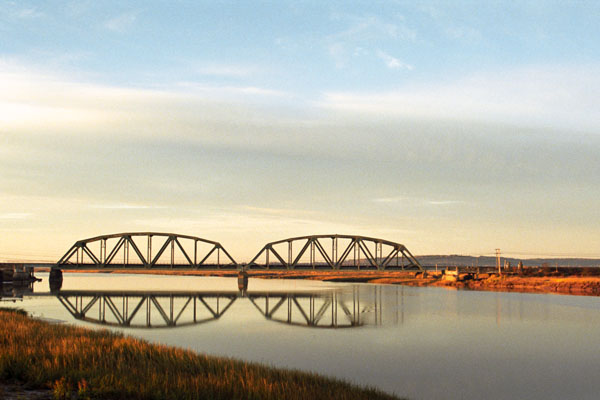
The CN Rail bridge (1996)
The Scenery
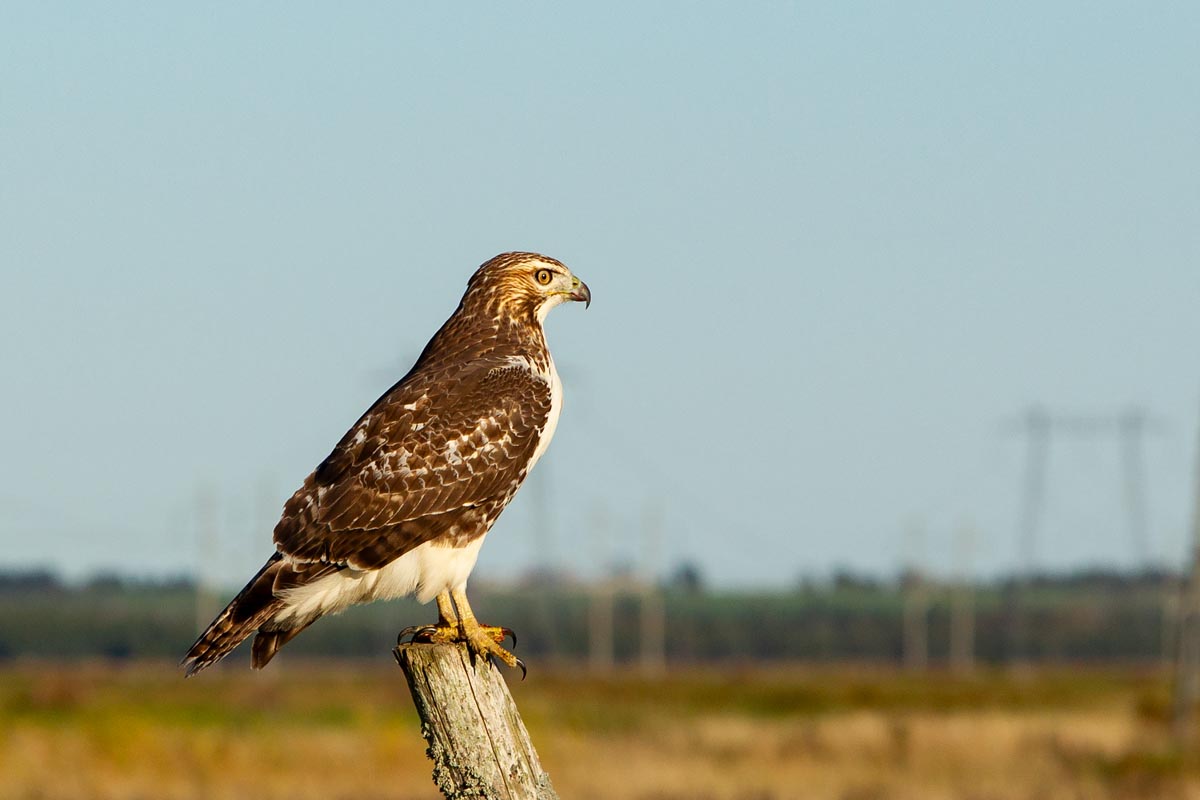
The land is mostly flat, shaped only by the berms and swales used to drain the fields and keep them dry and workable. Several dirt roads criss-cross the fields, as does the Tantramar River and its branches. Most of the land was reclaimed from tidal and salt marshes by the Acadians, starting around 1670. Modern farmers still grow hay to feed their livestock and fields not under cultivation are used as cattle pastures during the warmer months. Remaining bogs and marshes, and the nearby Sackville Waterfowl park, are home to migratory birds, muskrats, northern harriers, and red-tailed hawks (above).
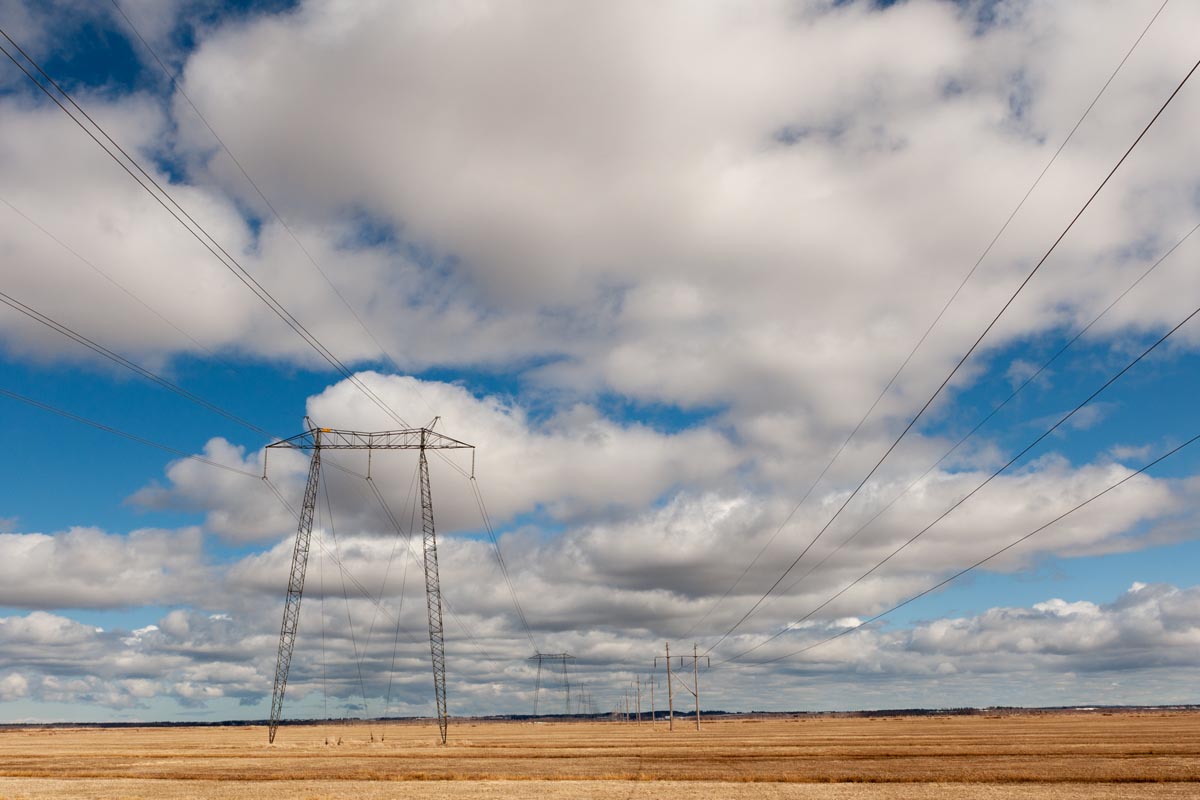
Major electrical transmission lines also cut through the Tantramar Marsh, and the large steel towers and high-voltage lines loom over the fields. At first I was annoyed by their presence, and would often try to frame images to exclude the towers and make it as easy as possible to remove the transmission lines in Photoshop. Over the years, though, I came to recognize them as an integral part of the landscape and now willingly incorporate them into the images, either as a compositional element or as the main subject. If they are ever-present to the eye, they can be ever-present in the photograph.
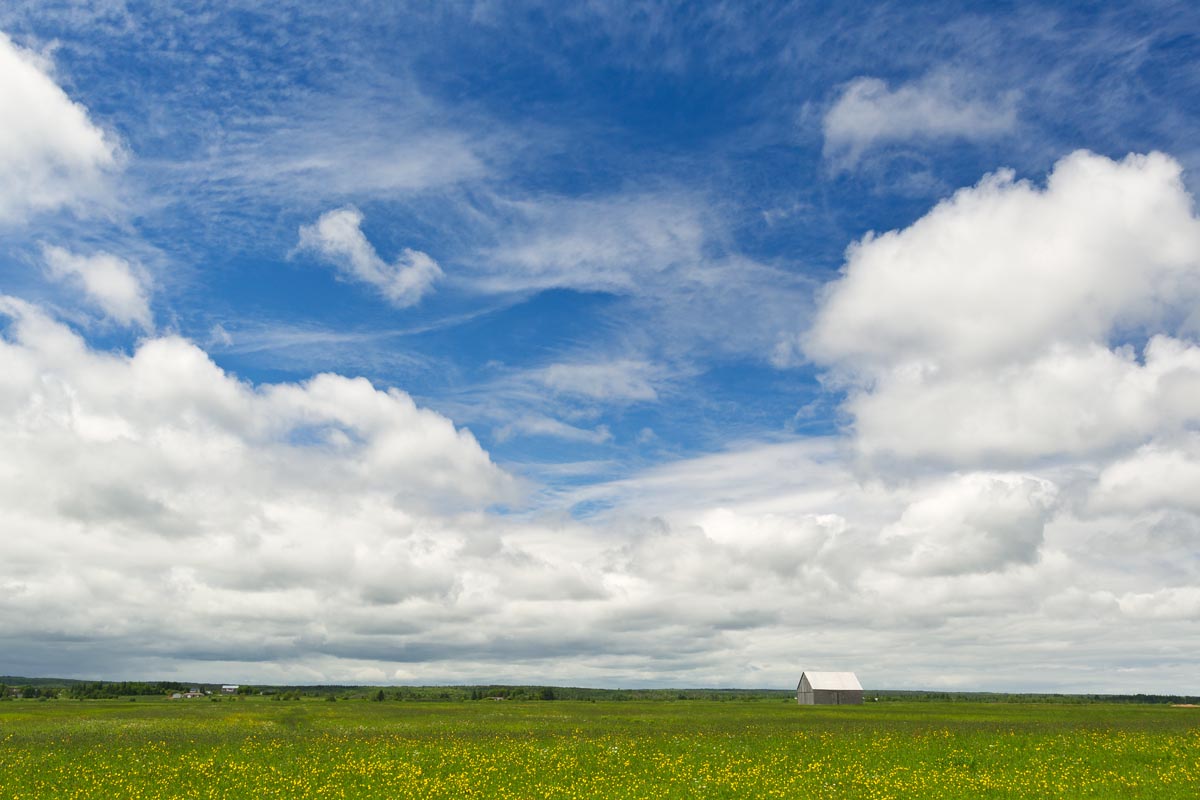
While many photographers visit for the remaining hay barns, the covered bridge, or to capture glimpses of both resident and migratory birds, my focus is usually on the land itself. I look for shapes and patterns created by the roads, tractor paths, swales, and berms, either naturally or through contrast. More often than not, I will turn my camera more to the sky, eschewing the rule-of-thirds and working with a sliver of land forming only one-fifth or one-sixth of the image. As David Plowden has stated, when there is not much to see on the land, the sky becomes the greater part of the equation. Clear skies seem to be a rarity, so the clouds are sometimes the main subject.
Although the above photos are almost all in colour, I much prefer to work in black and white. I tend to visit more in the spring and fall when the contrast is greater (it's all green, often too green, in the summer) and the tonal range lends itself more to monochrome. I think black and white also creates images that are far more timeless in nature, especially since there are few obvious or glaring signs of modernity on the marsh itself.
In addition to the images posted in the gallery below, you can find the above photo of the Tantramar Marsh in the Print section of this website. Other photos appear in two of my series, titled Tantramar Lines and Tantramar Storms.
